EXTREMELY RARE! WWII 1944 Battle of Leyte Gulf U.S. 5th Air Force Philippines Campaign Combat Flight Navigation Map (Specially Produced For U.S. 5th Air Force Missions)
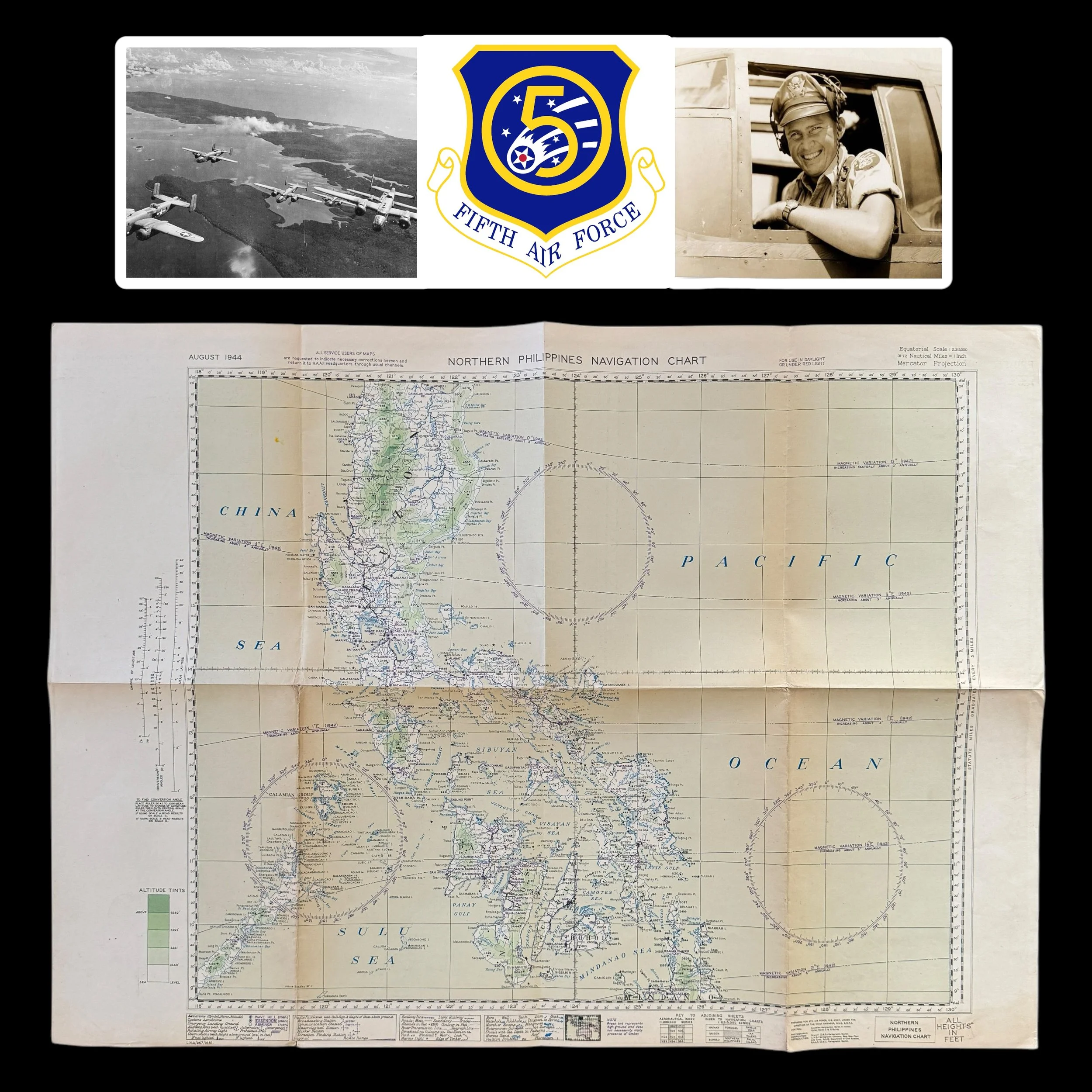

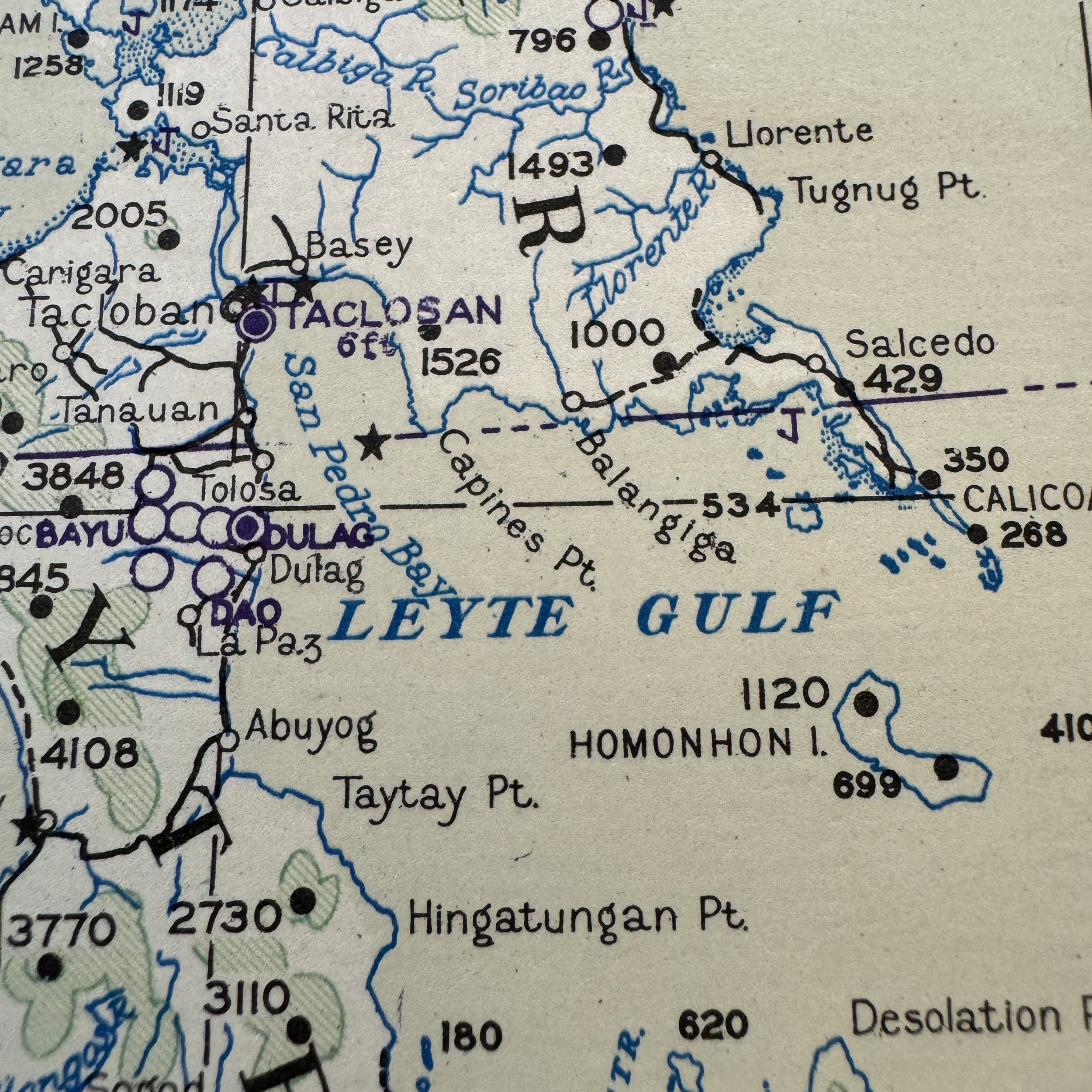
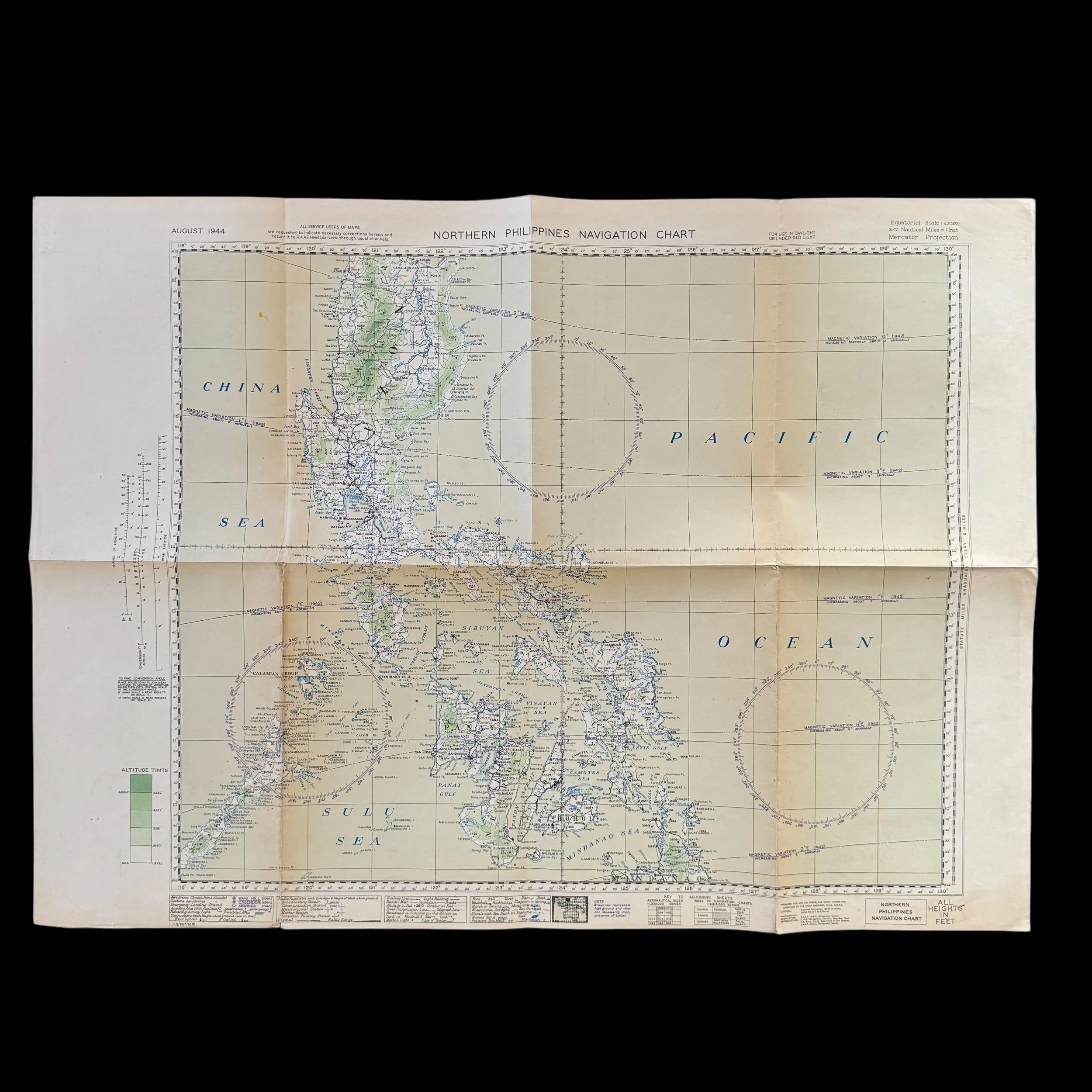
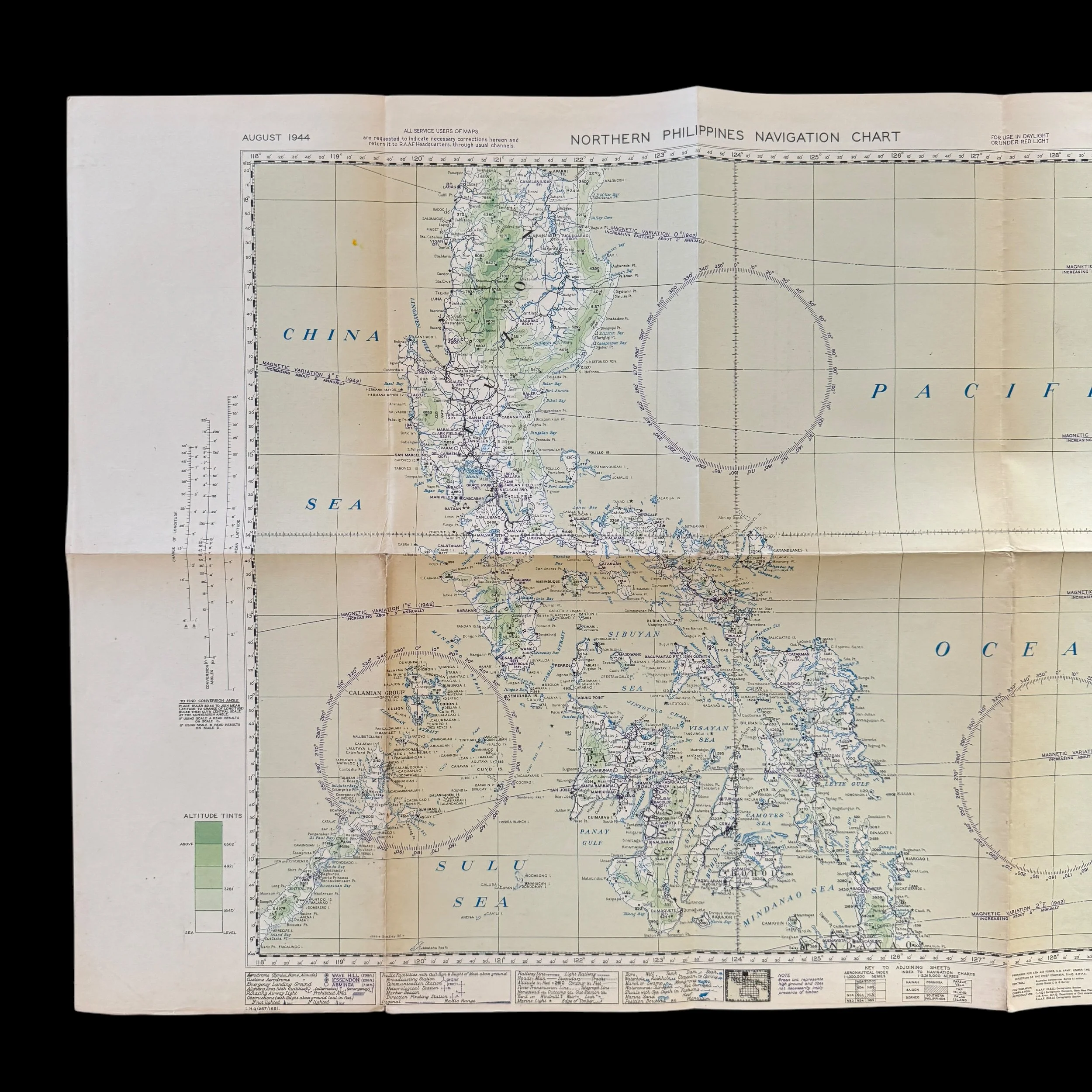




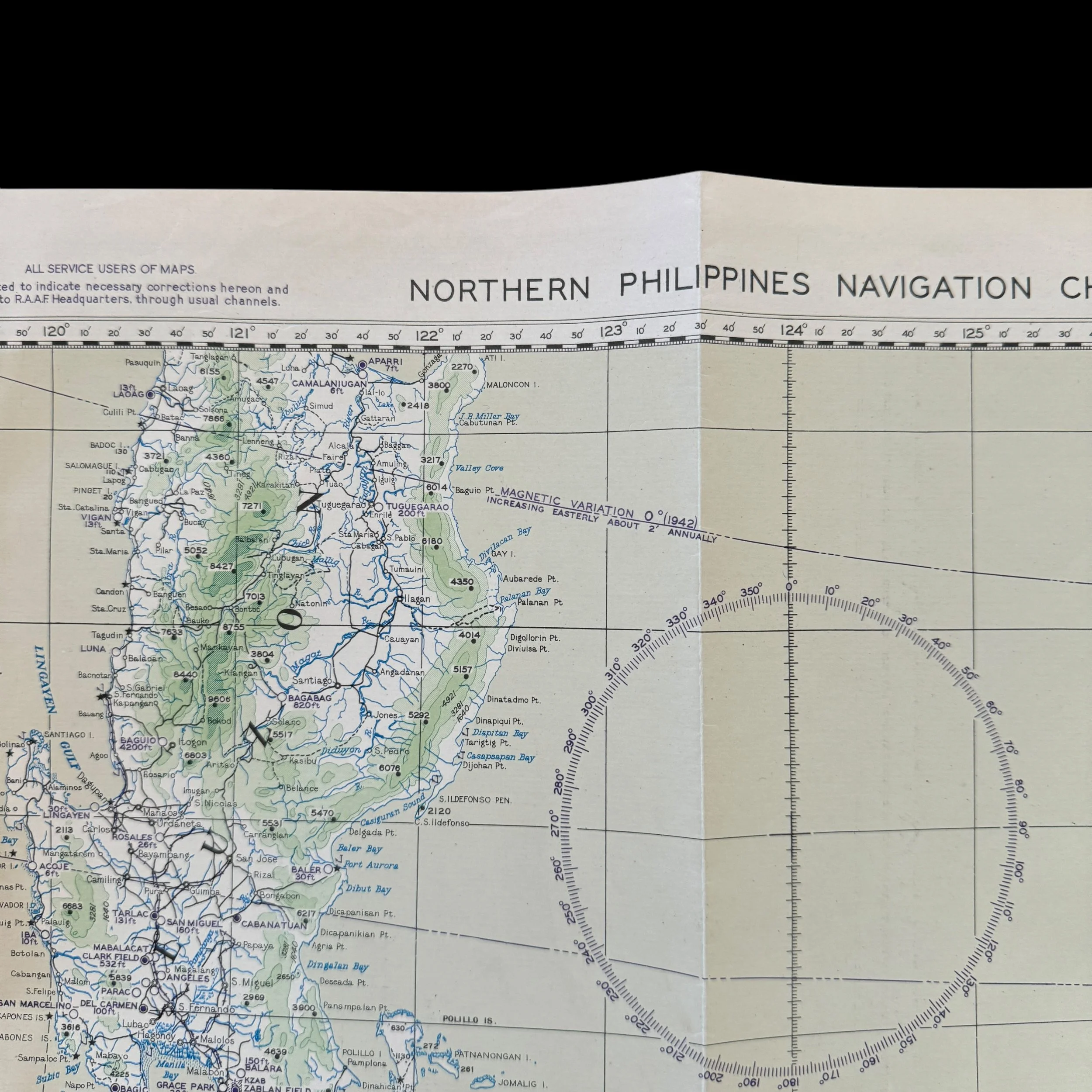
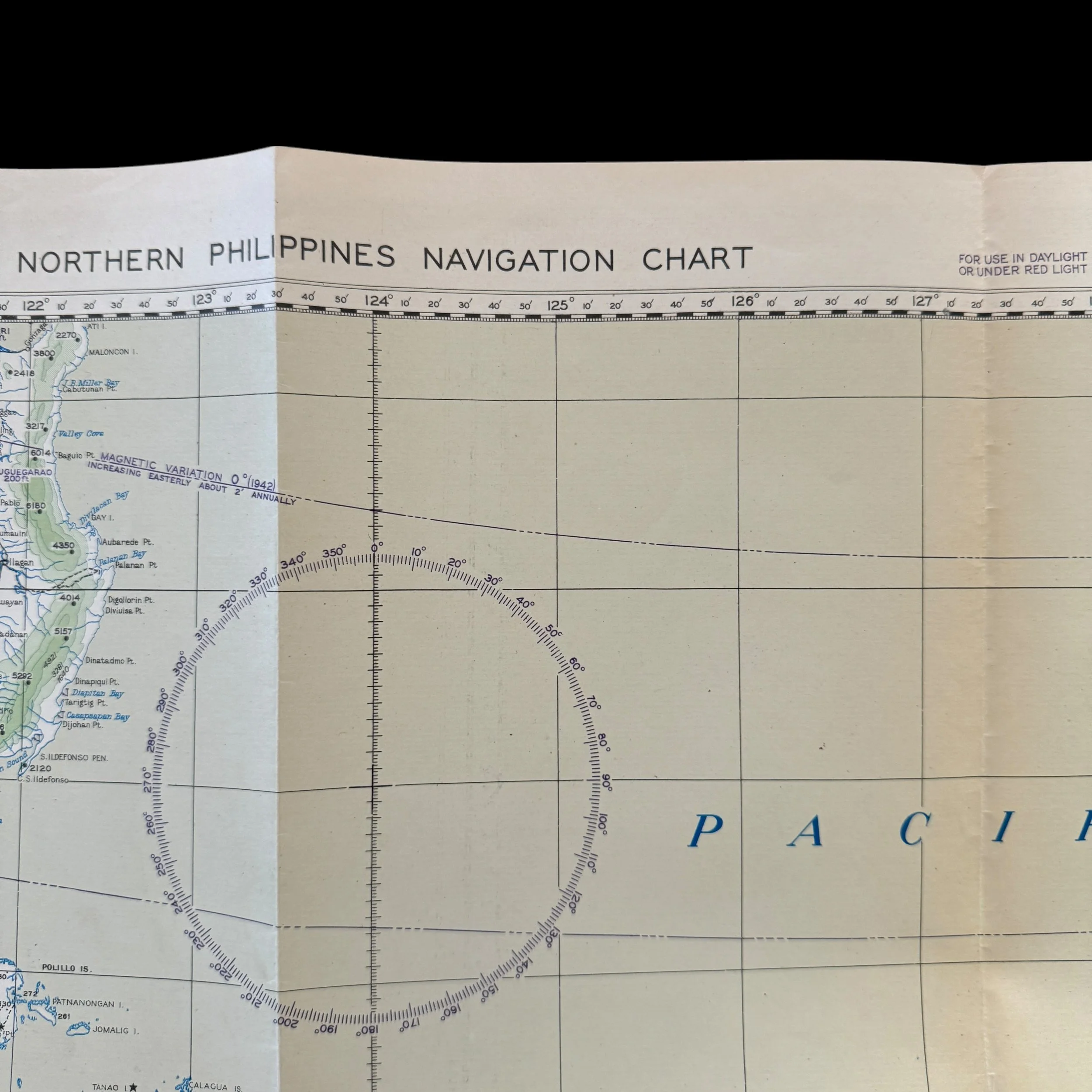
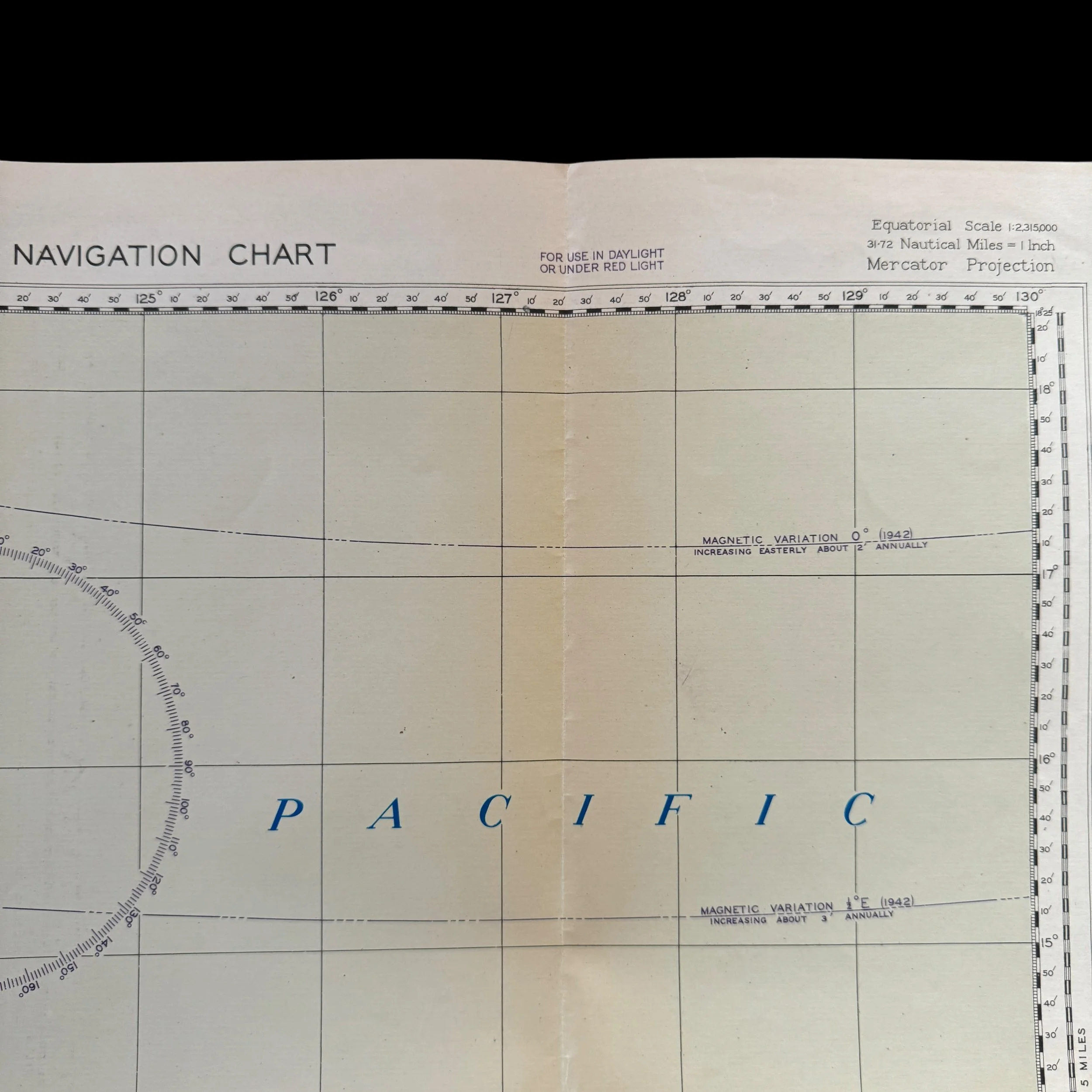
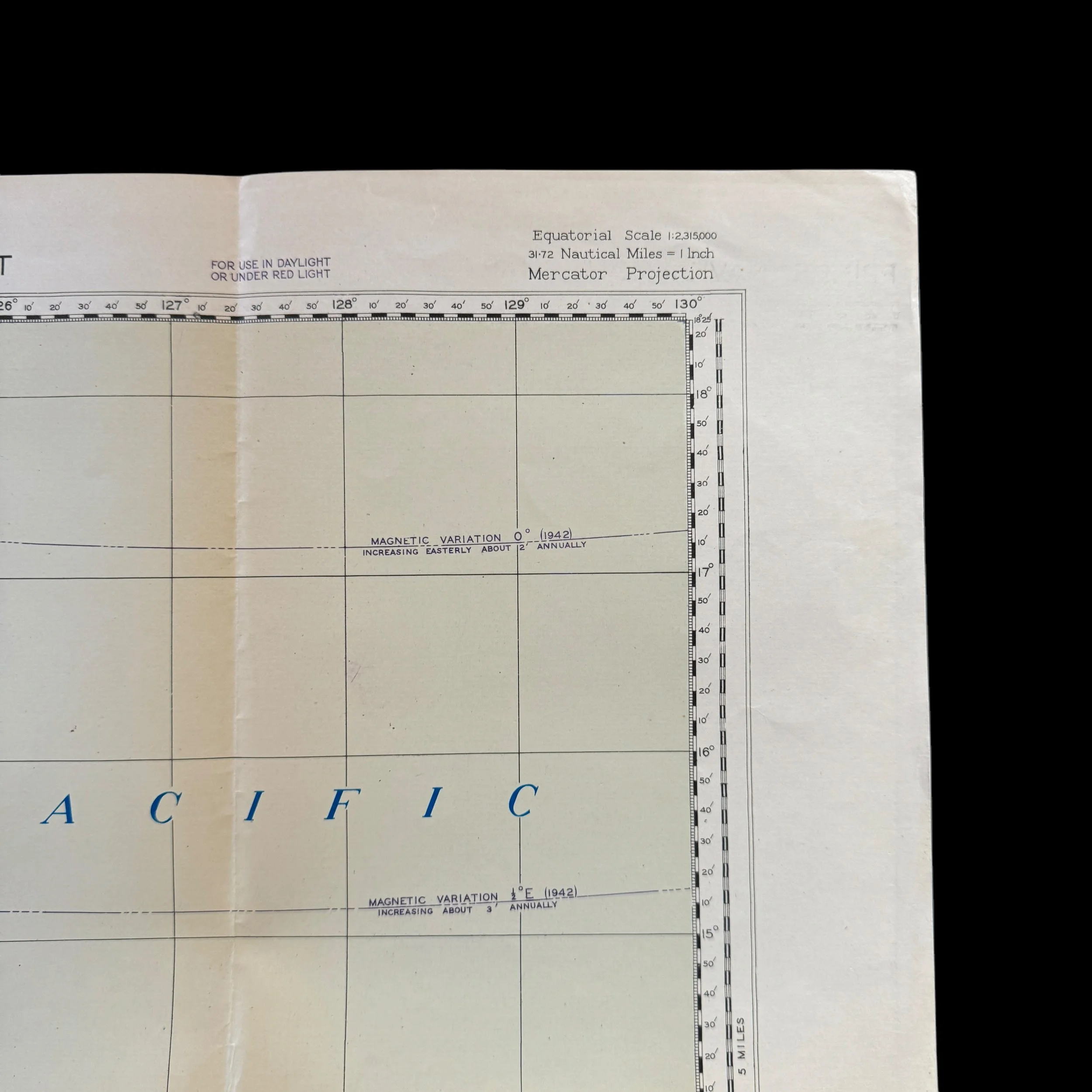
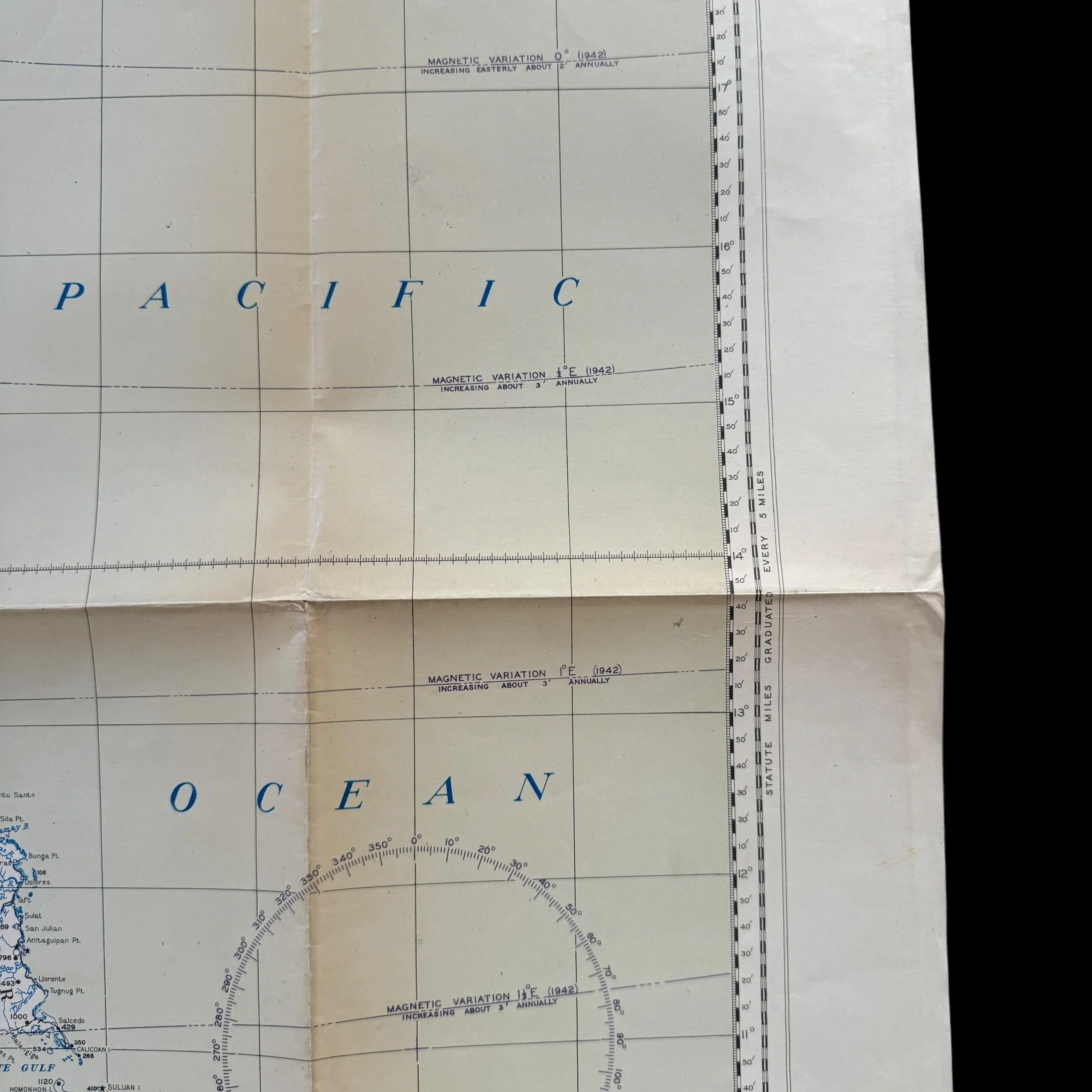
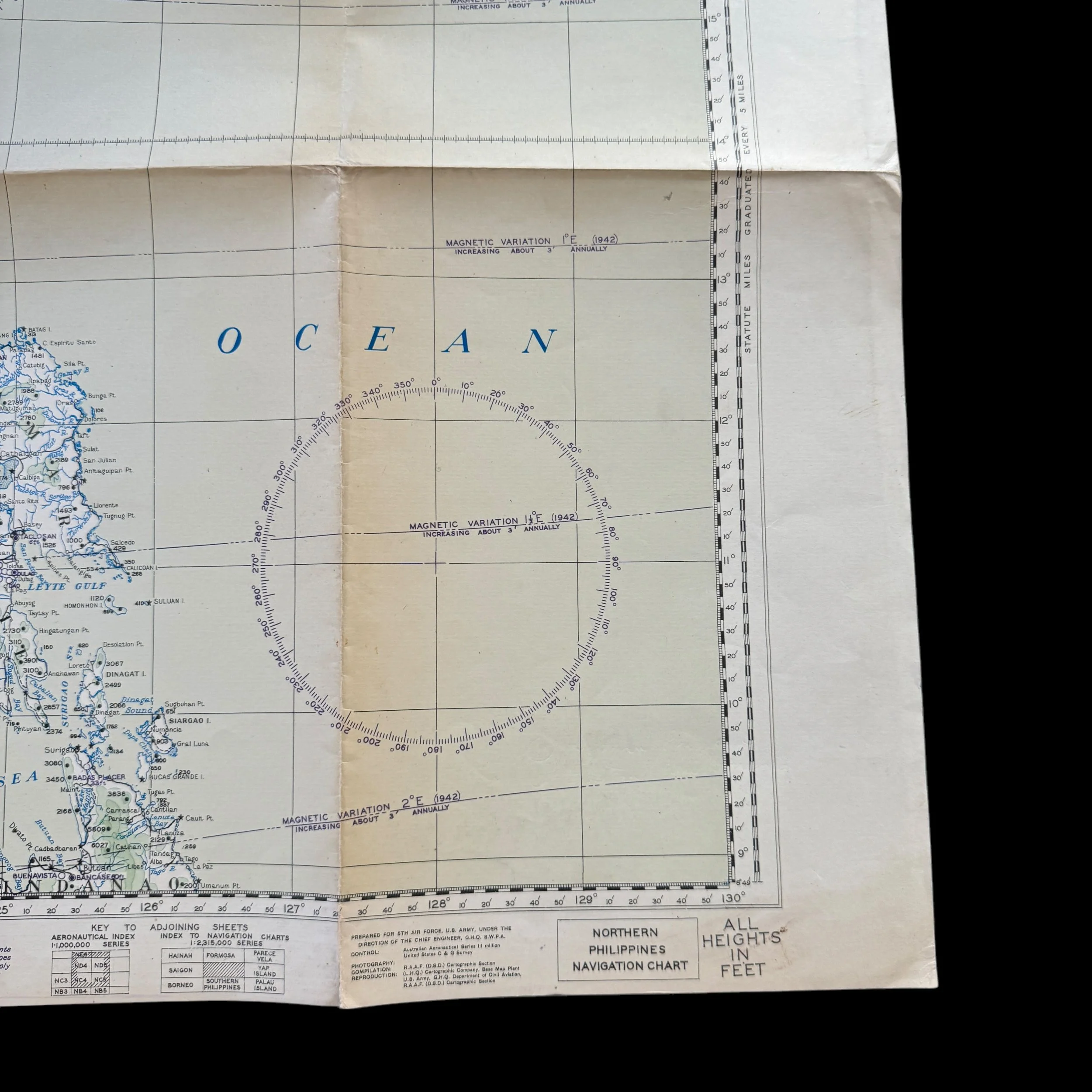
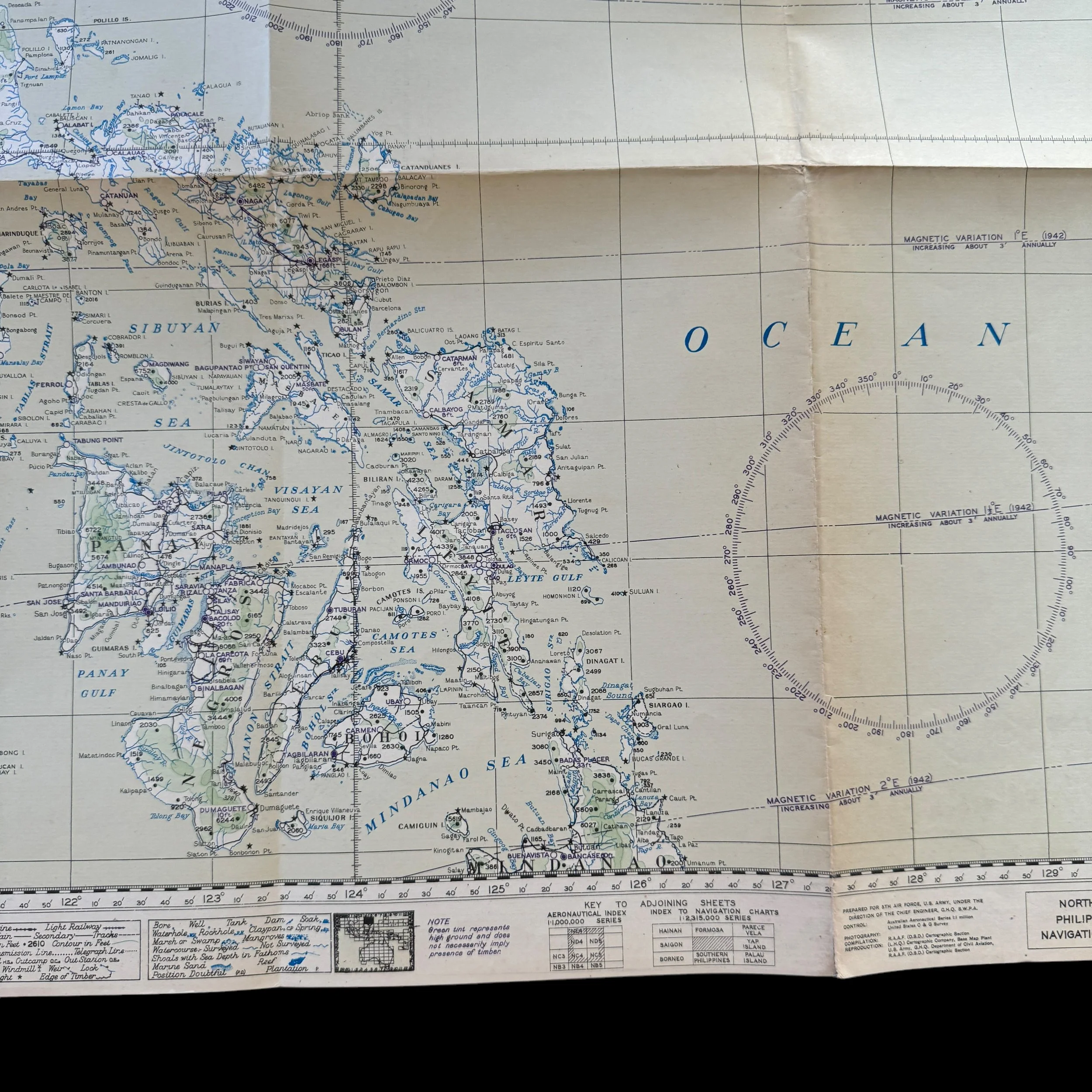
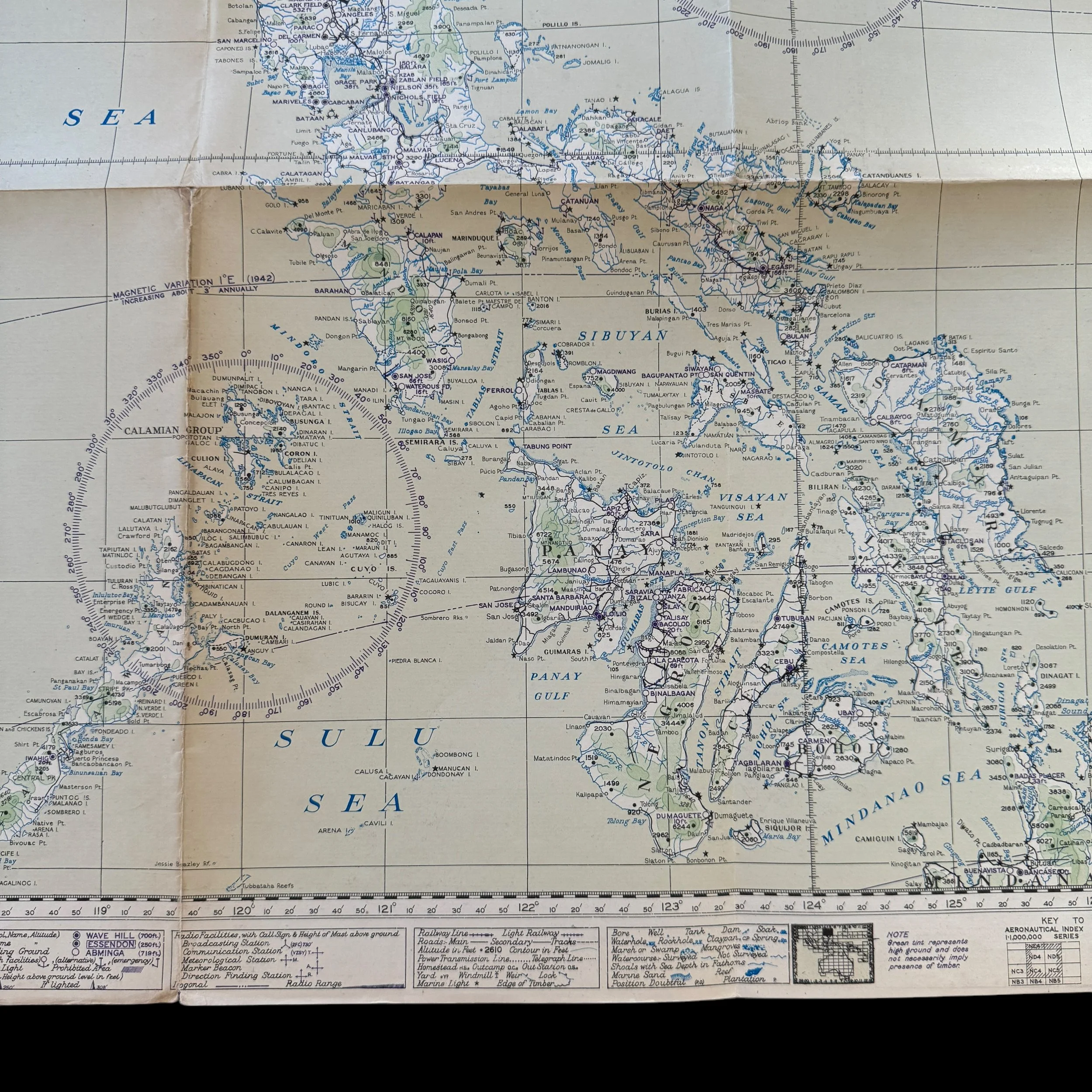

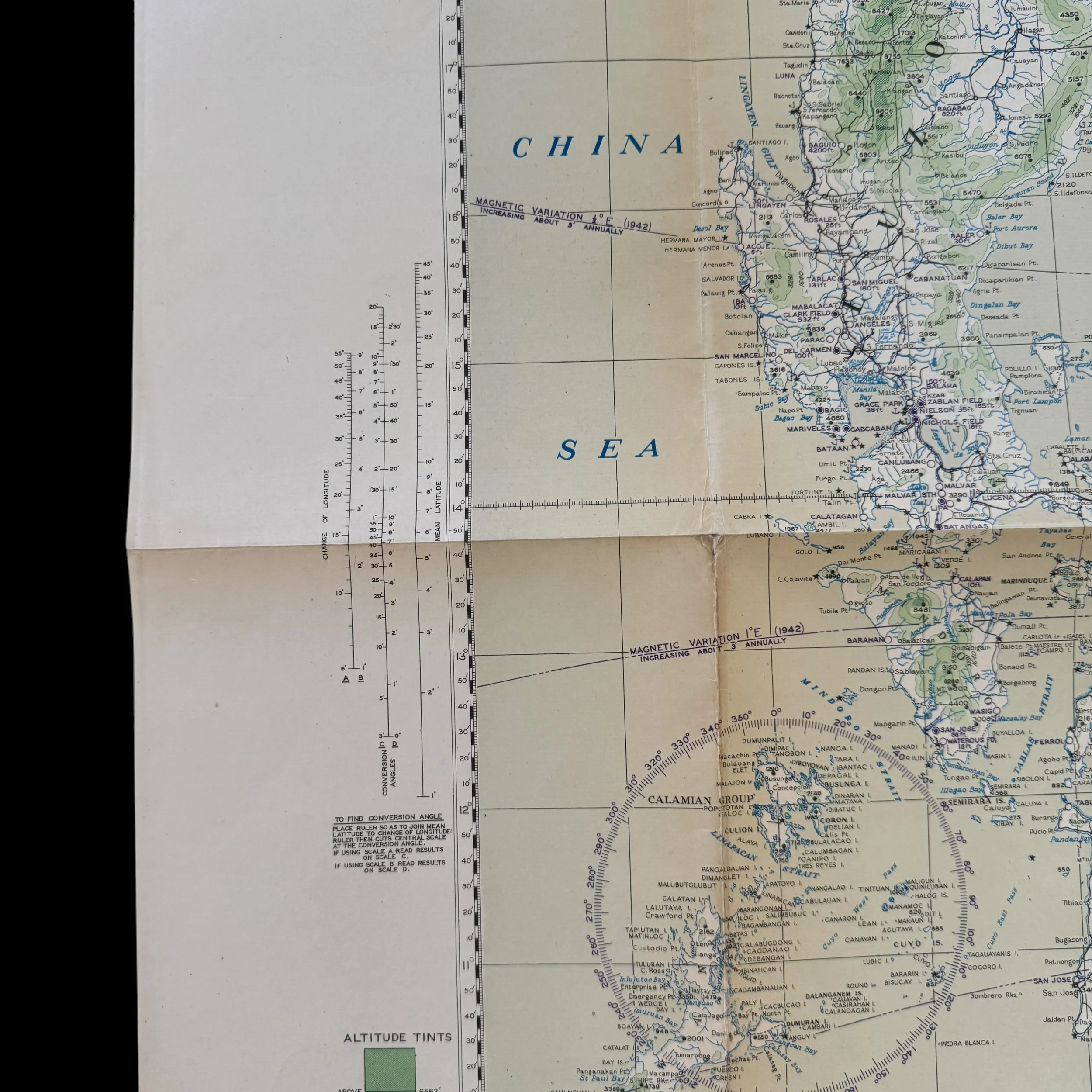
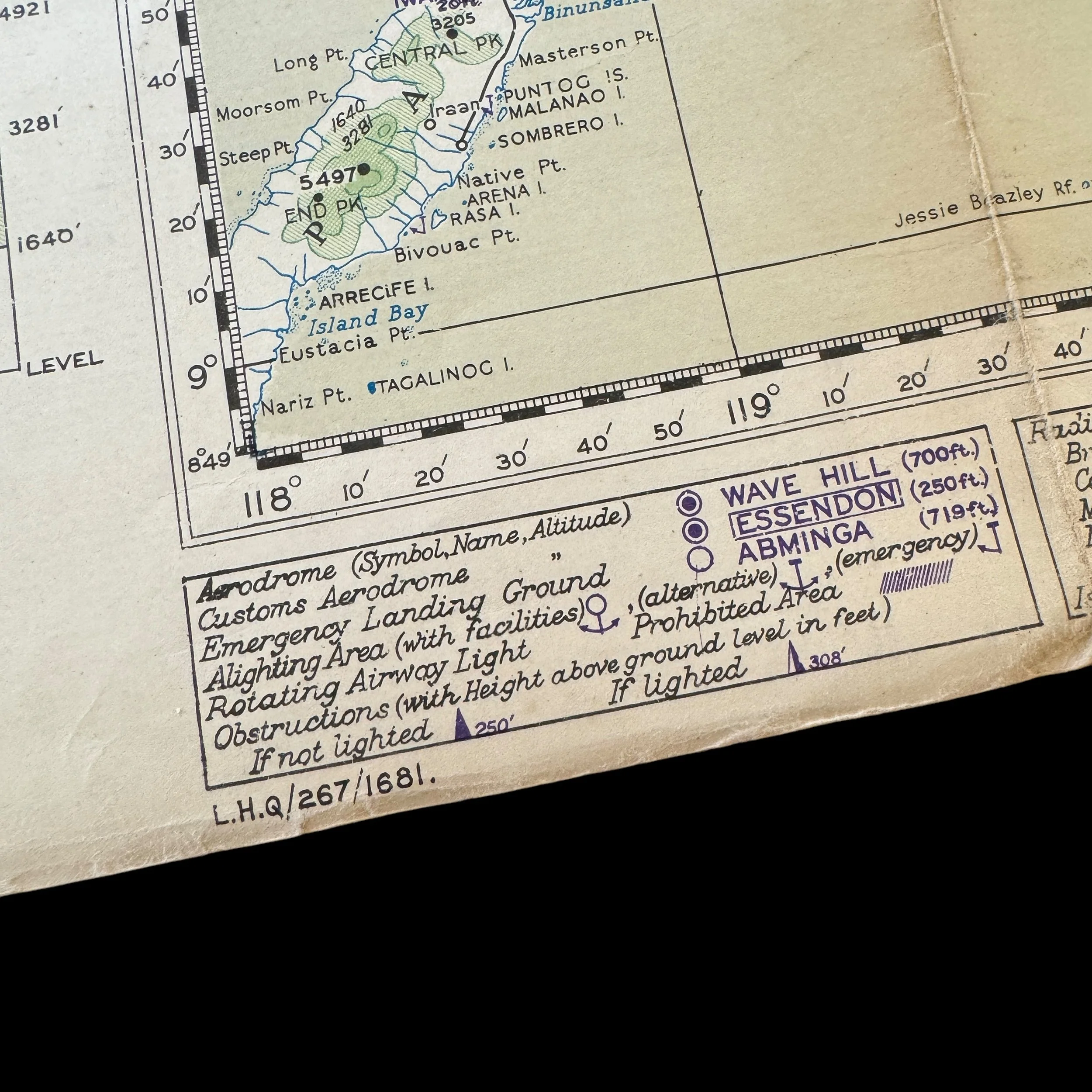
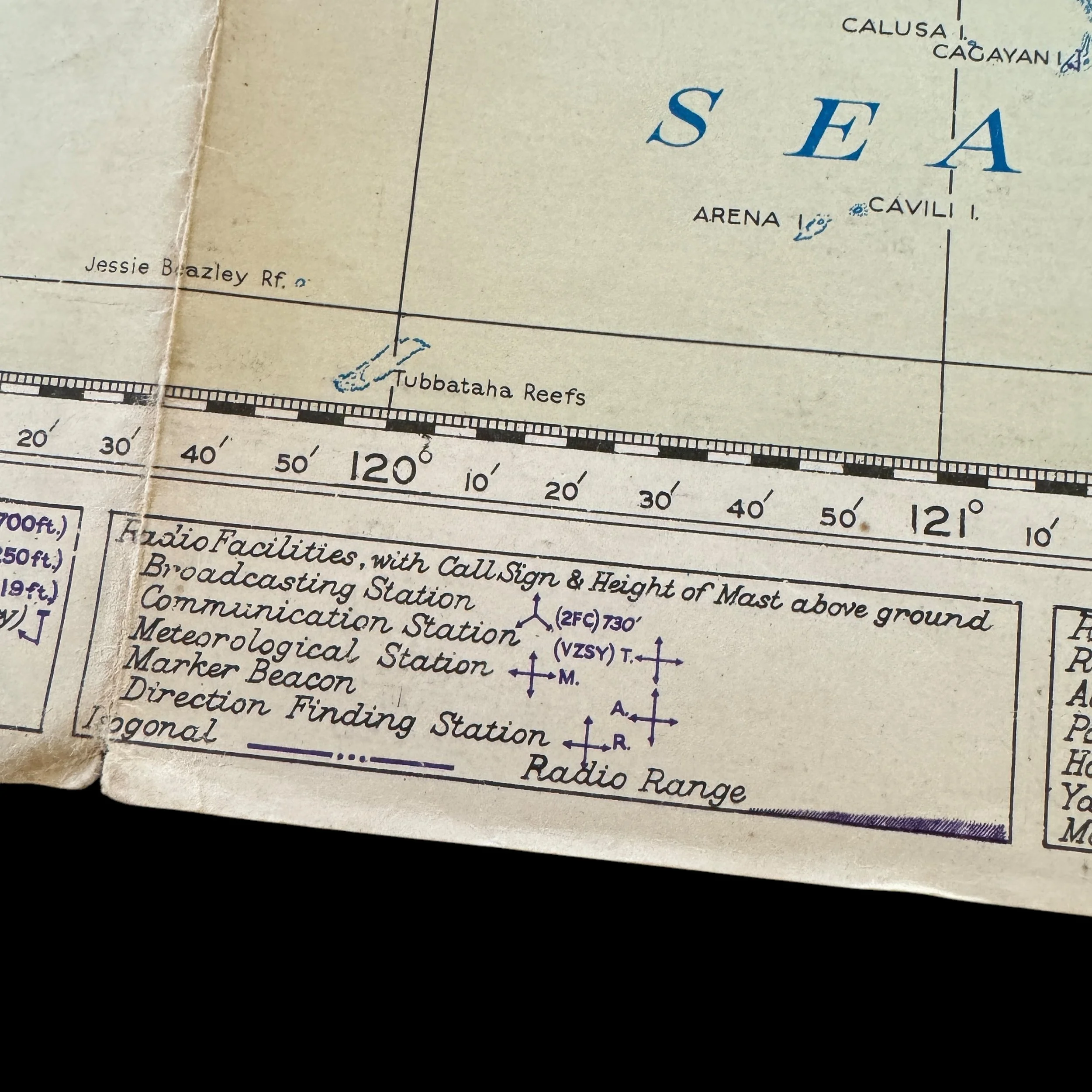
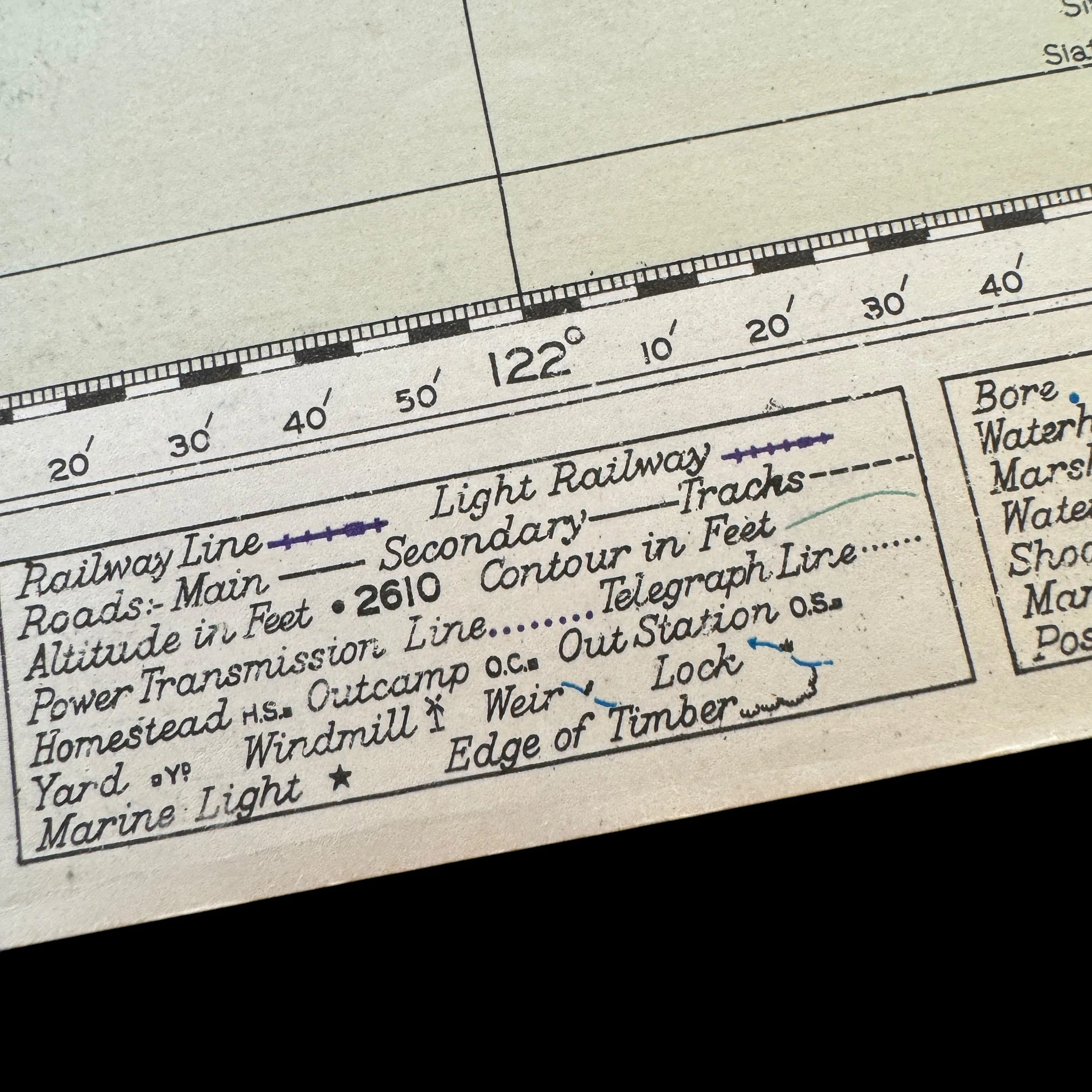
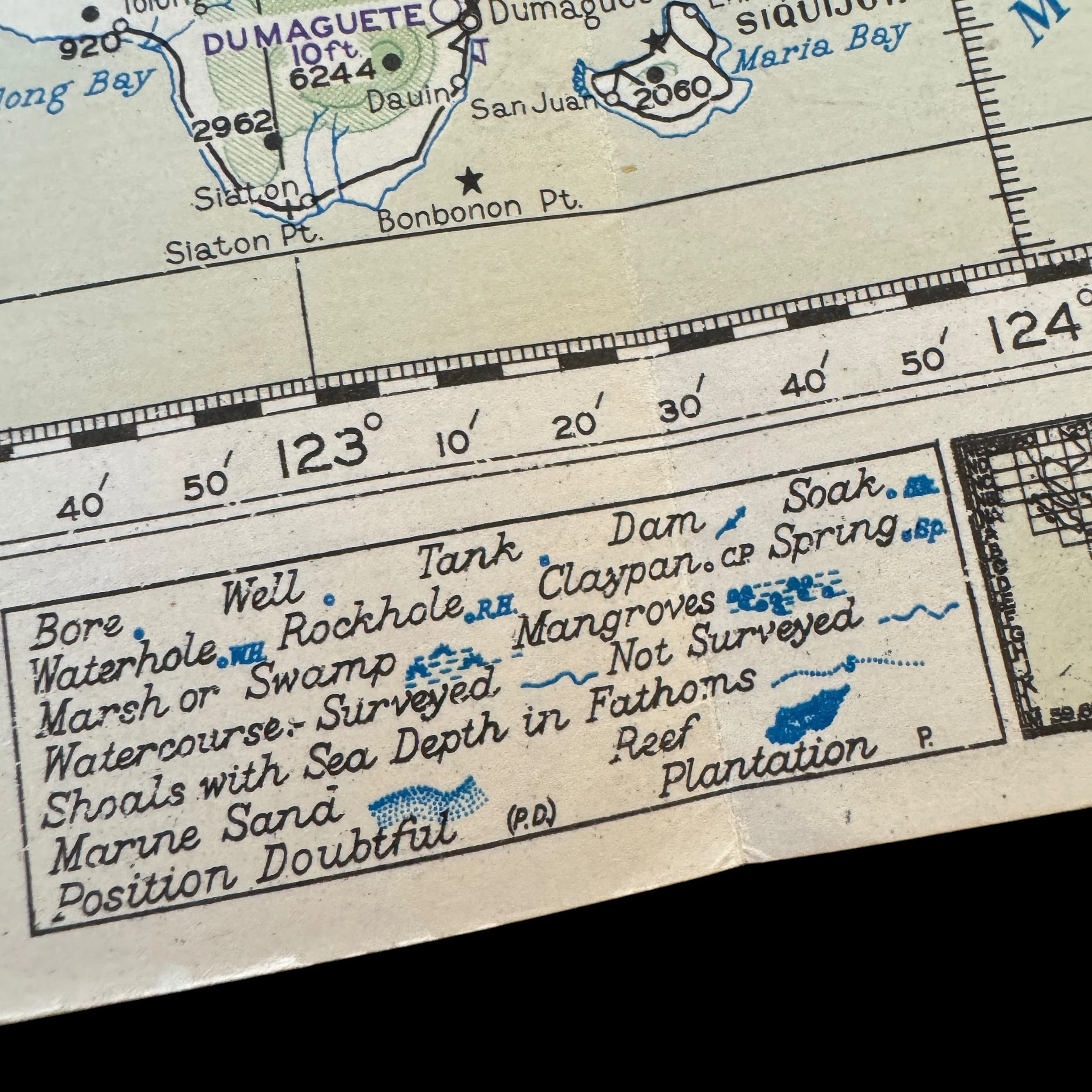
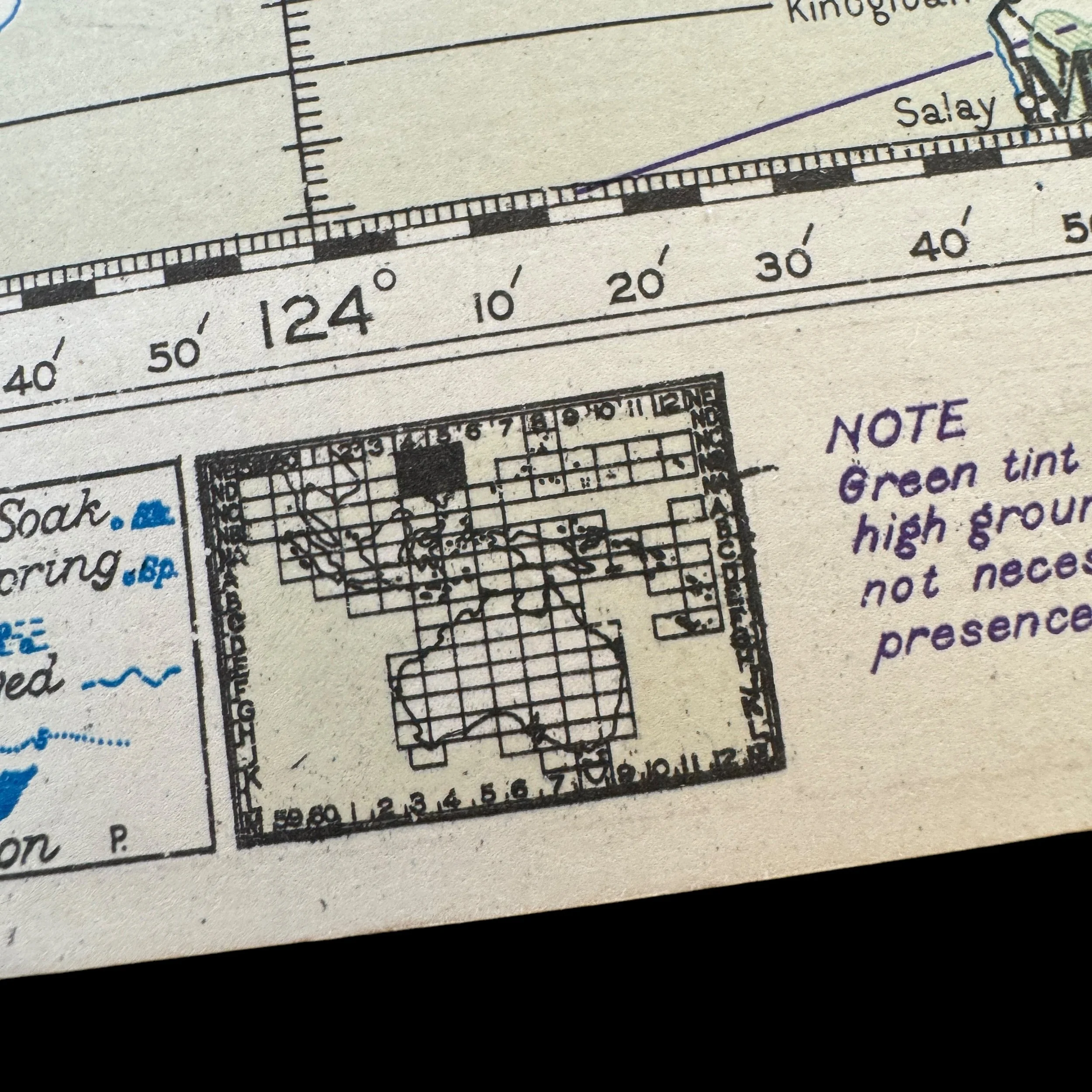
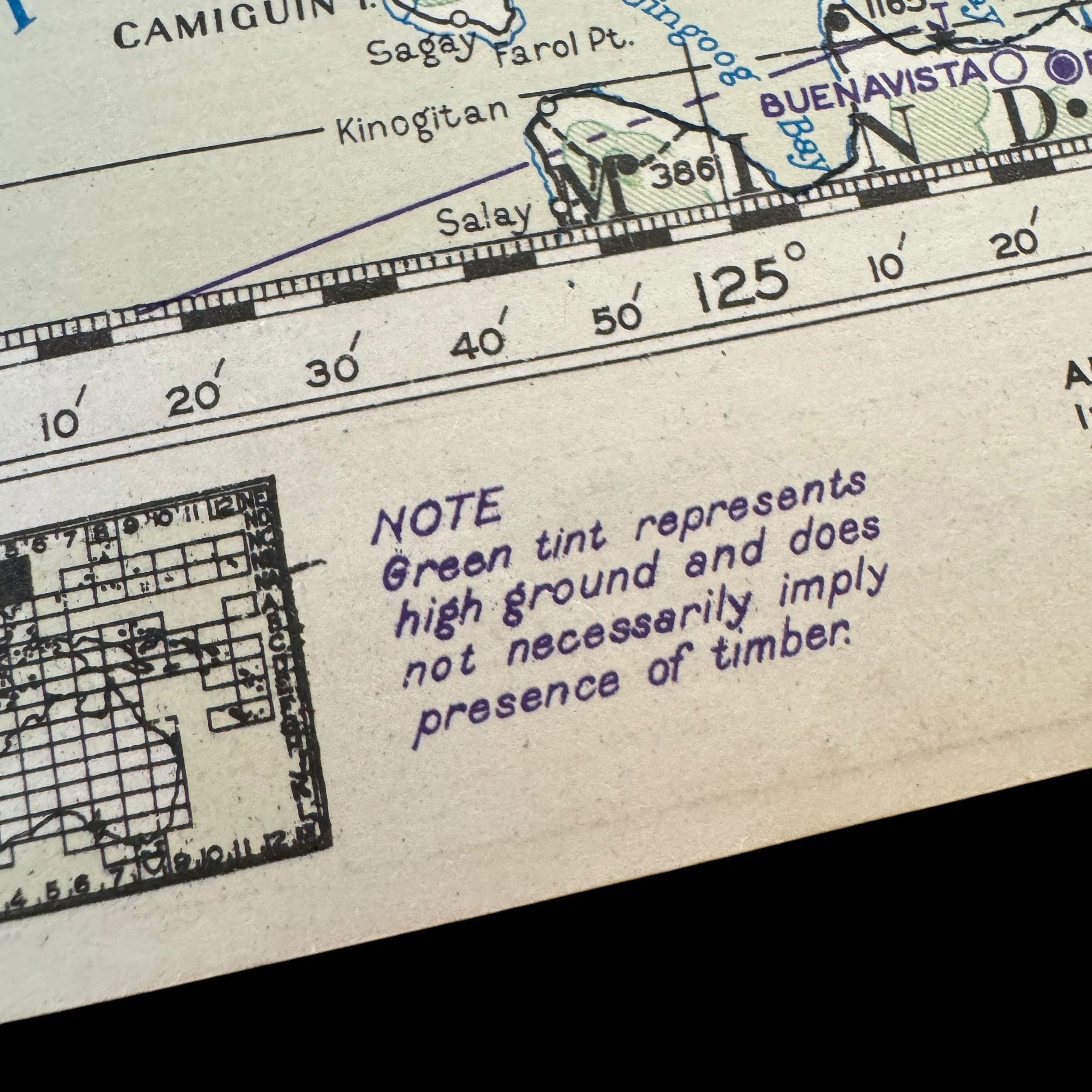
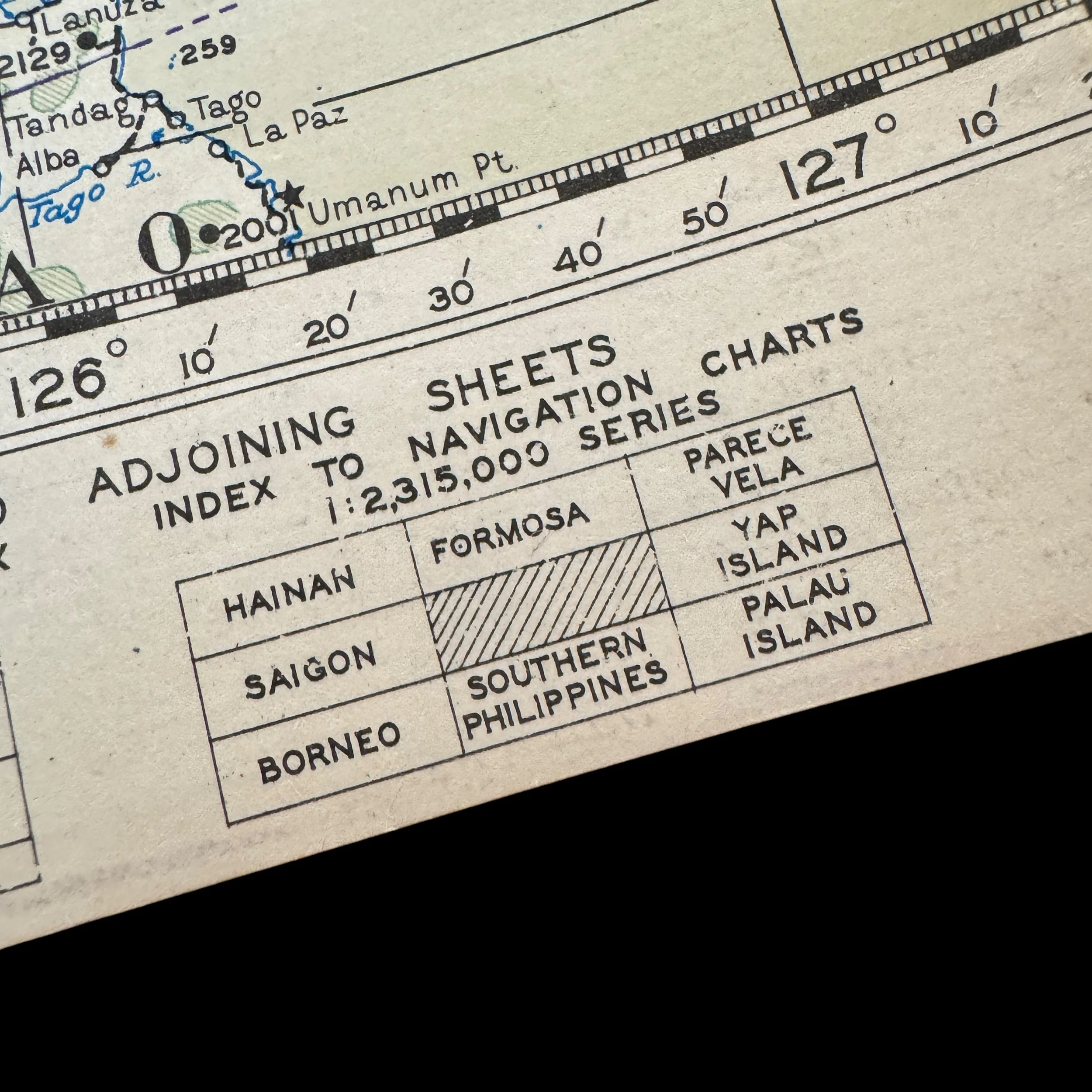

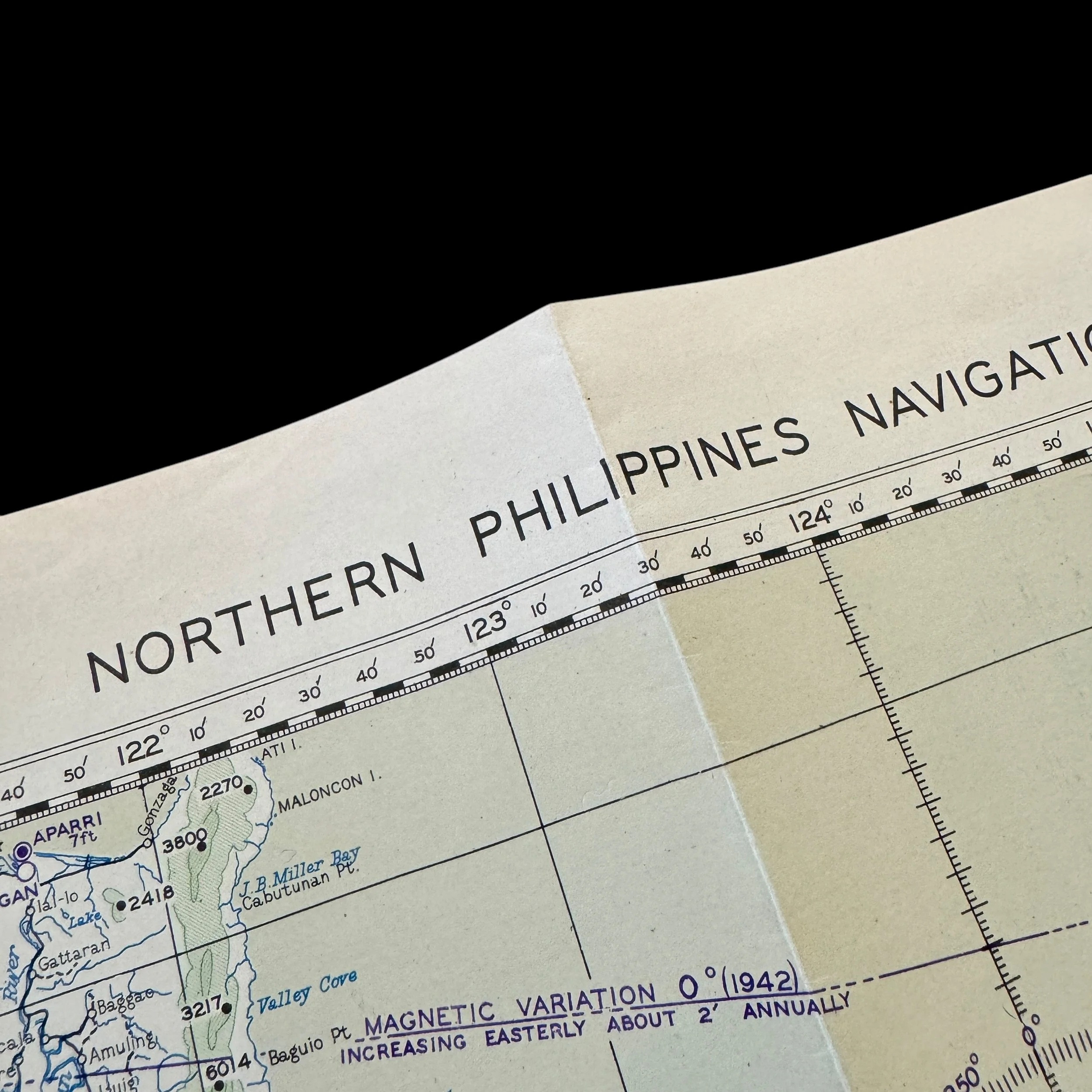

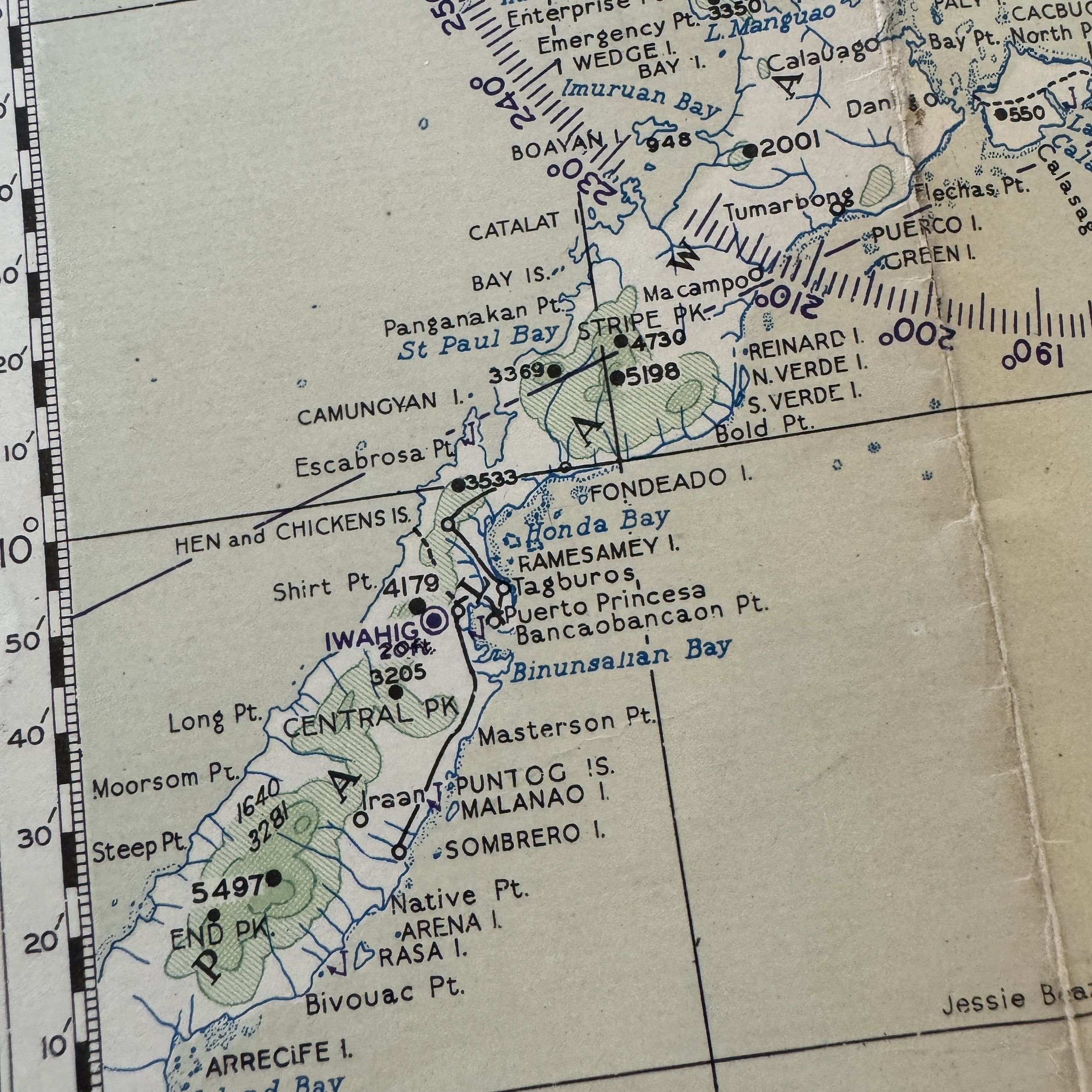

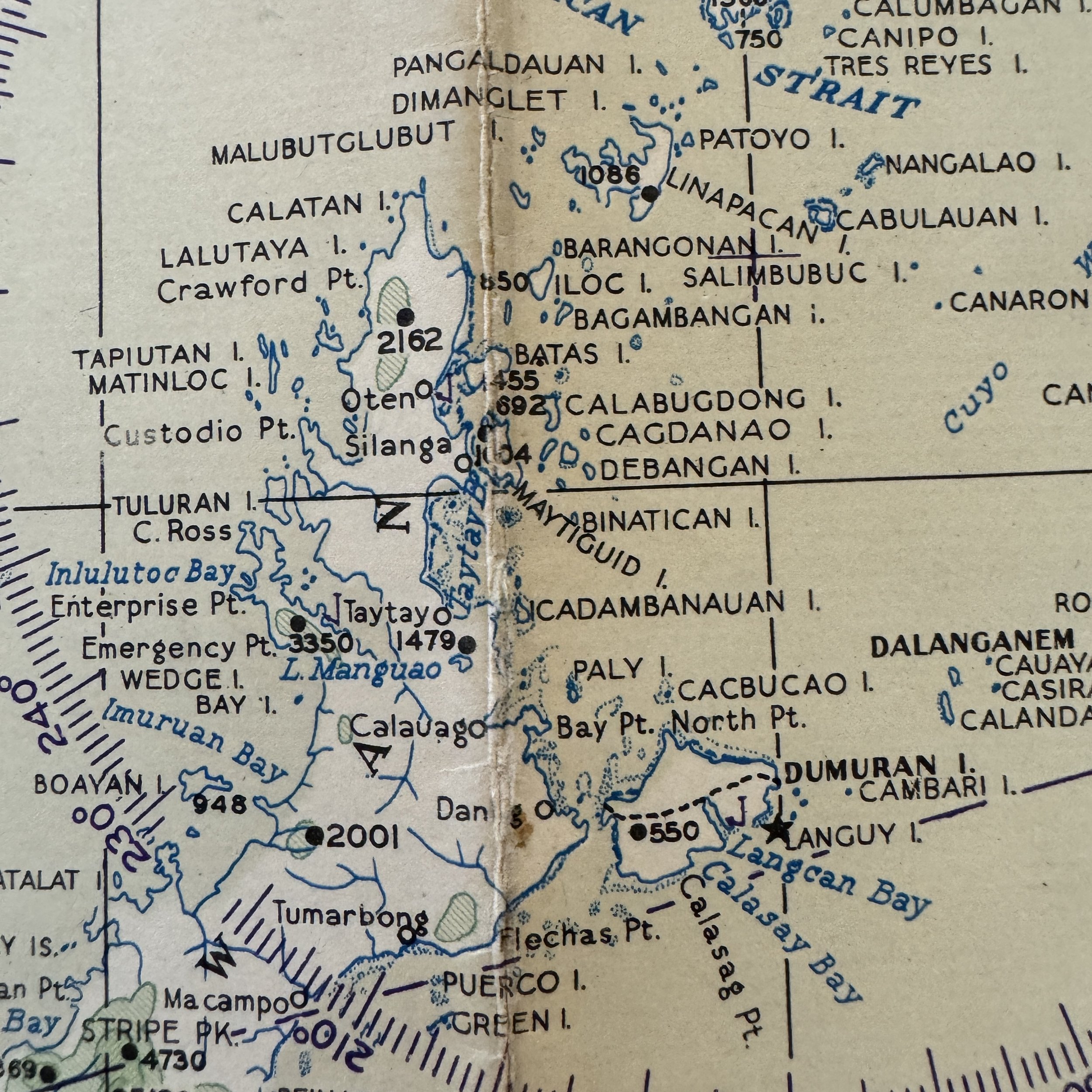
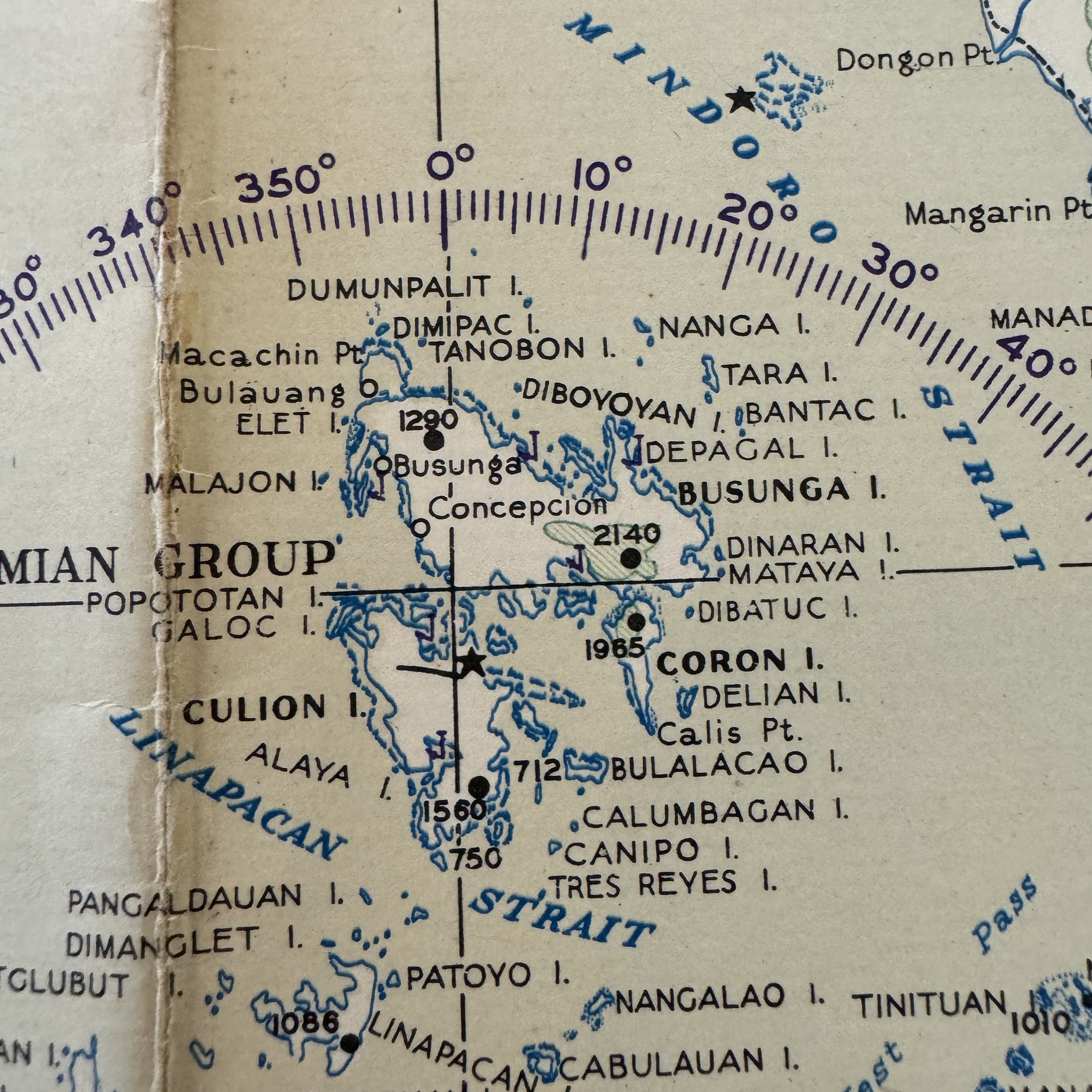
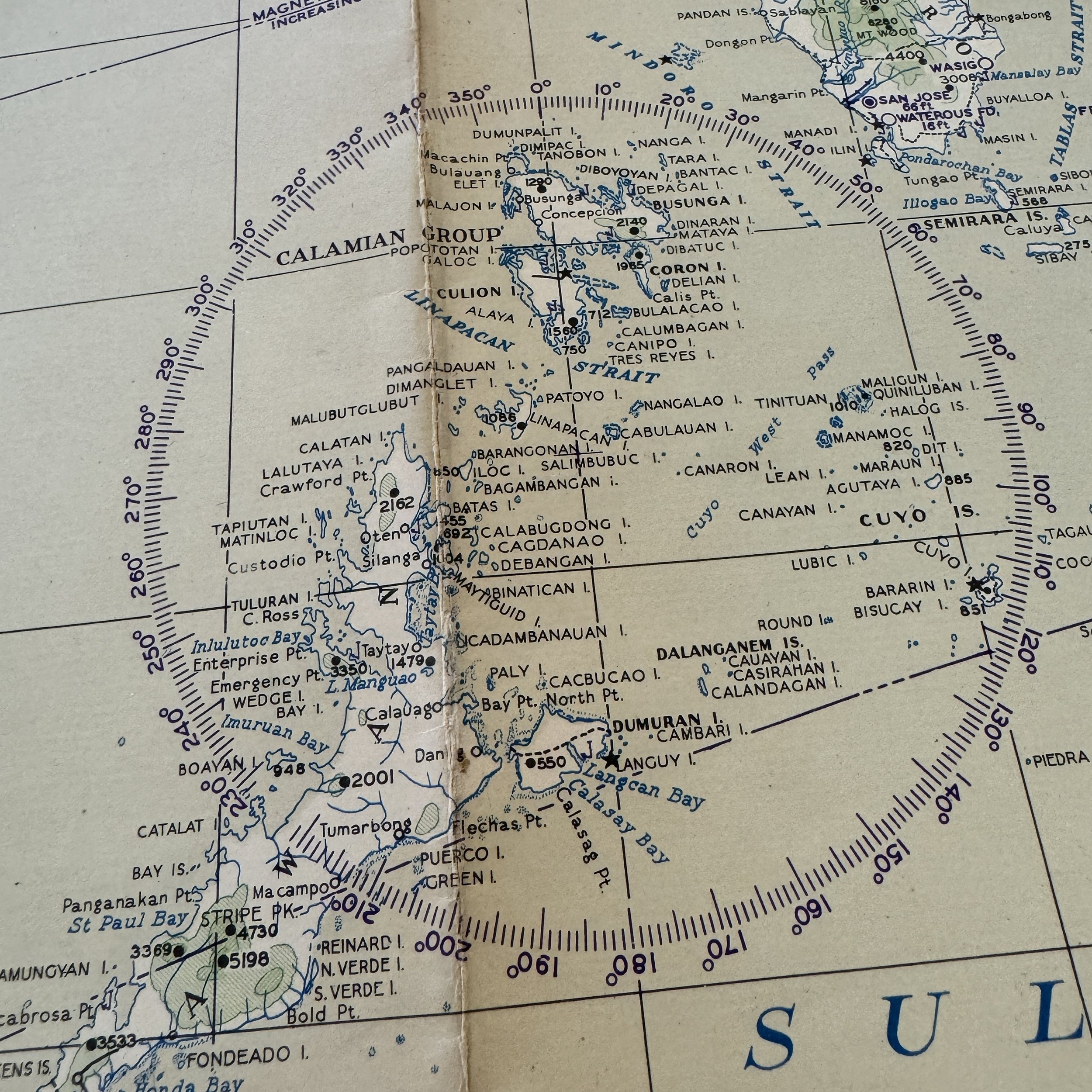


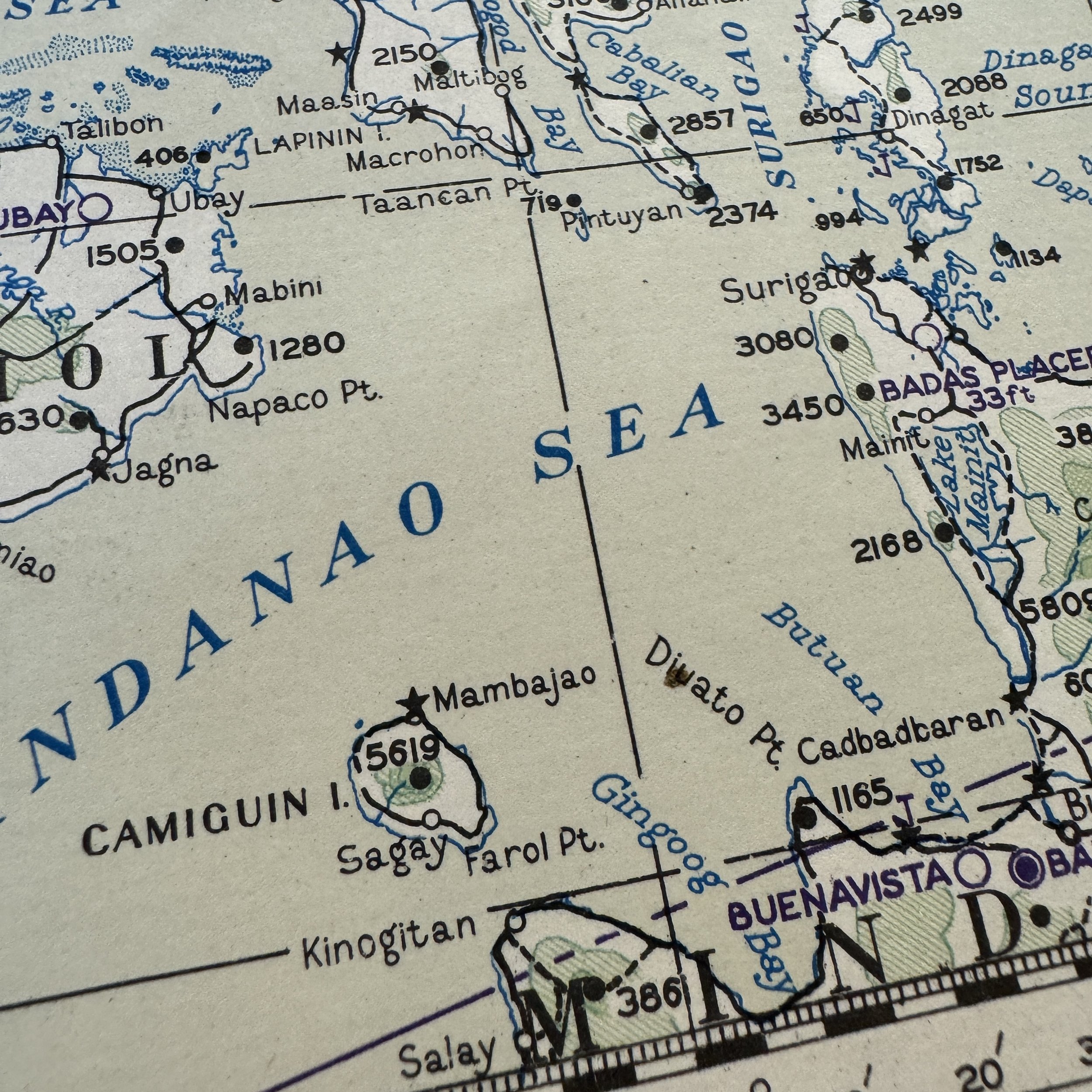
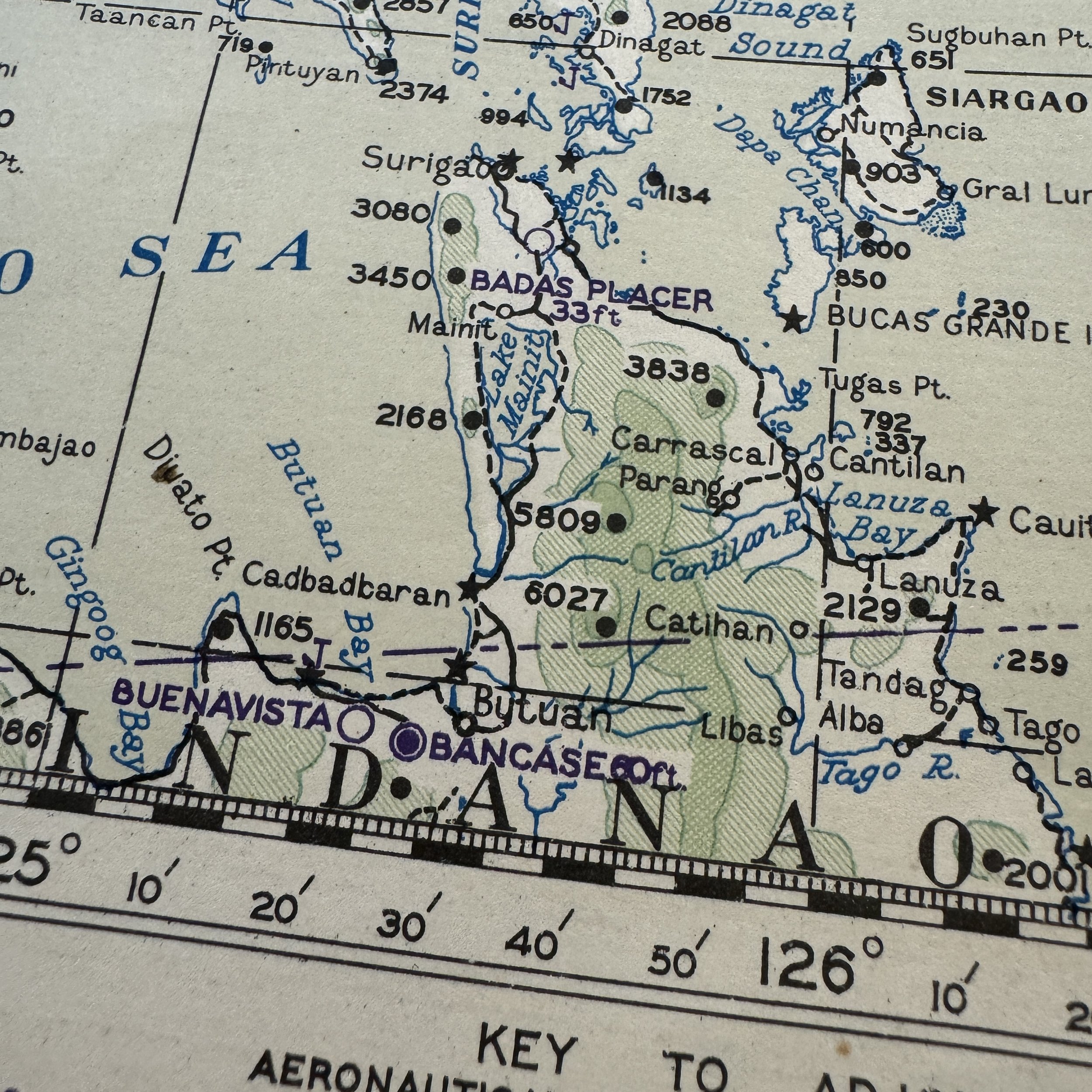
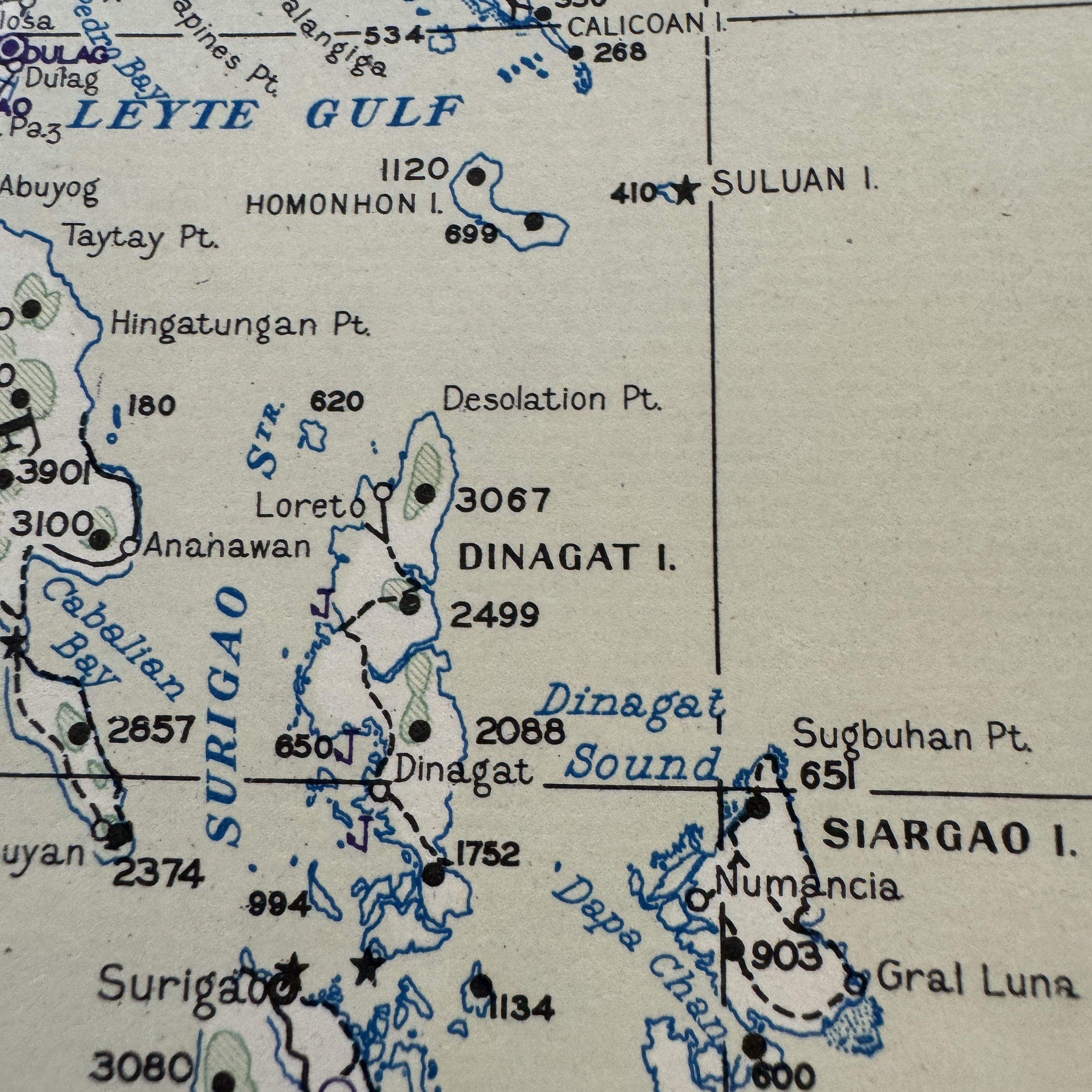
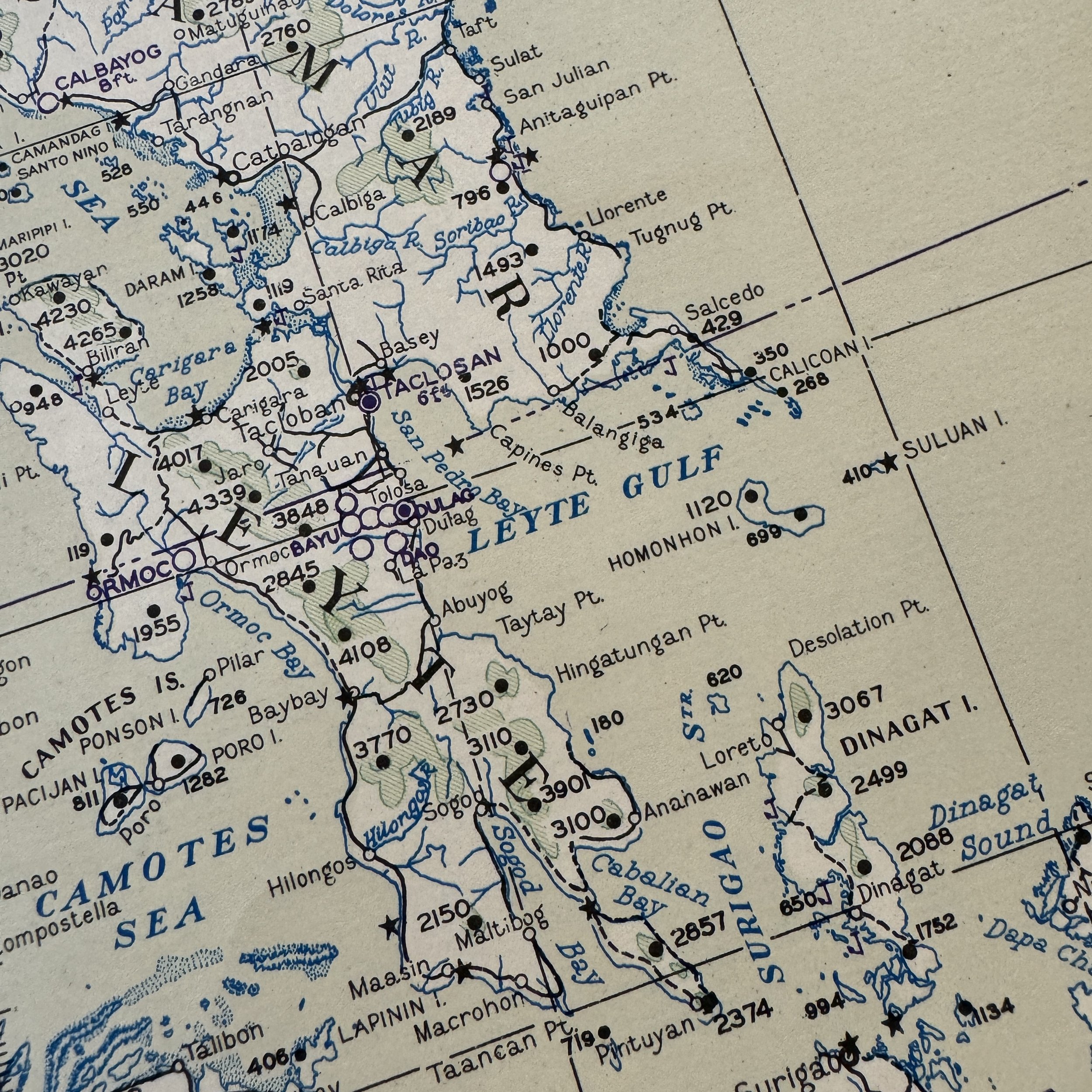
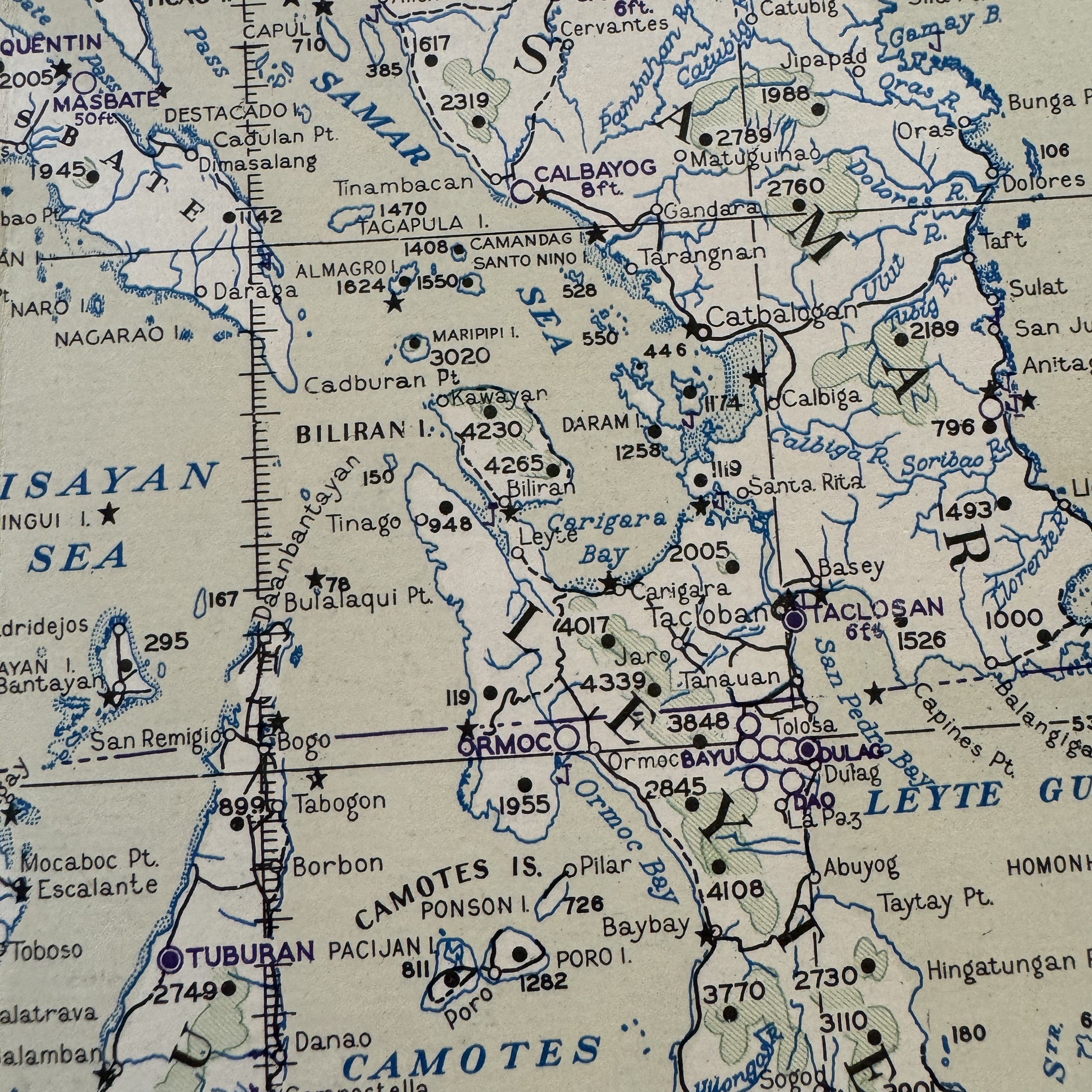


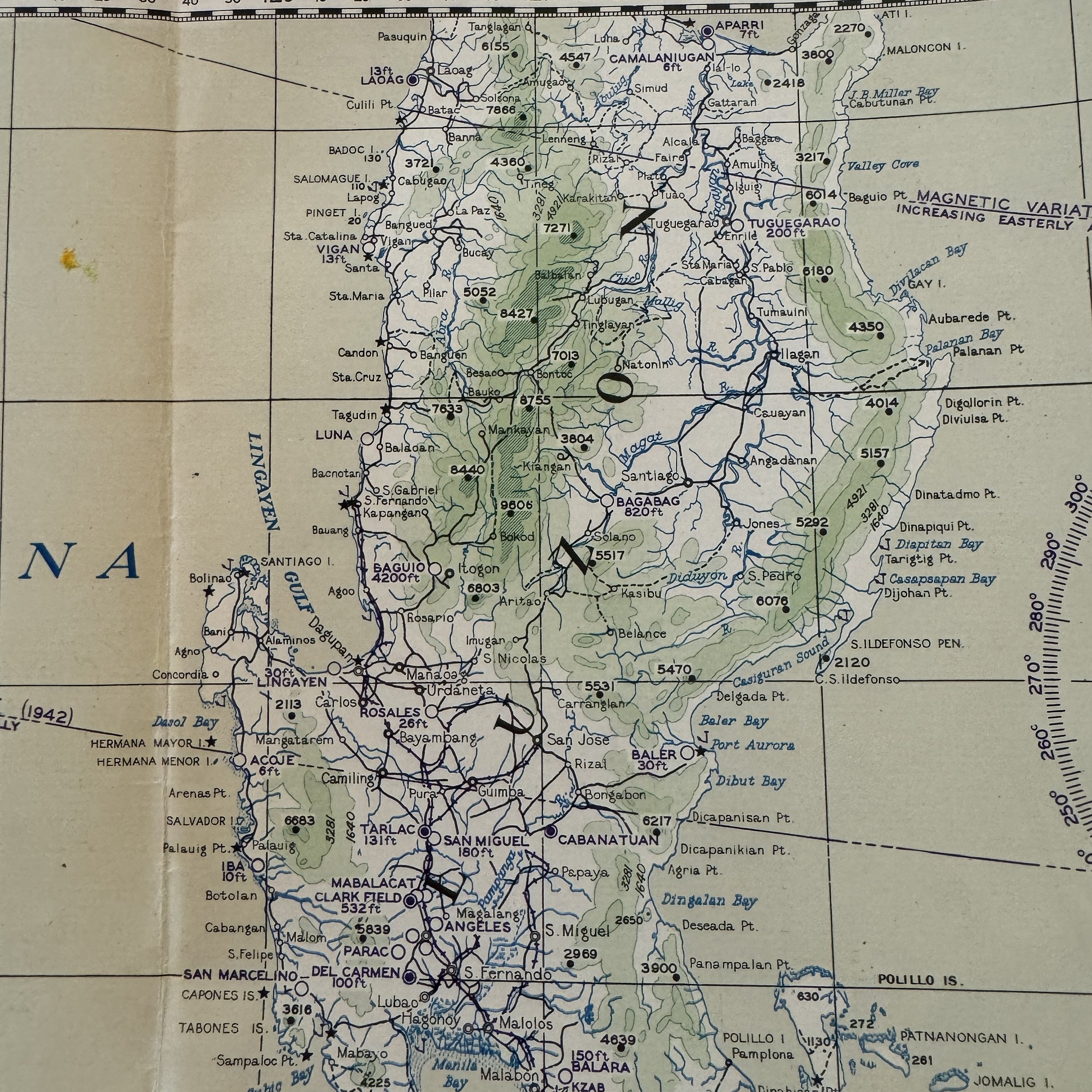
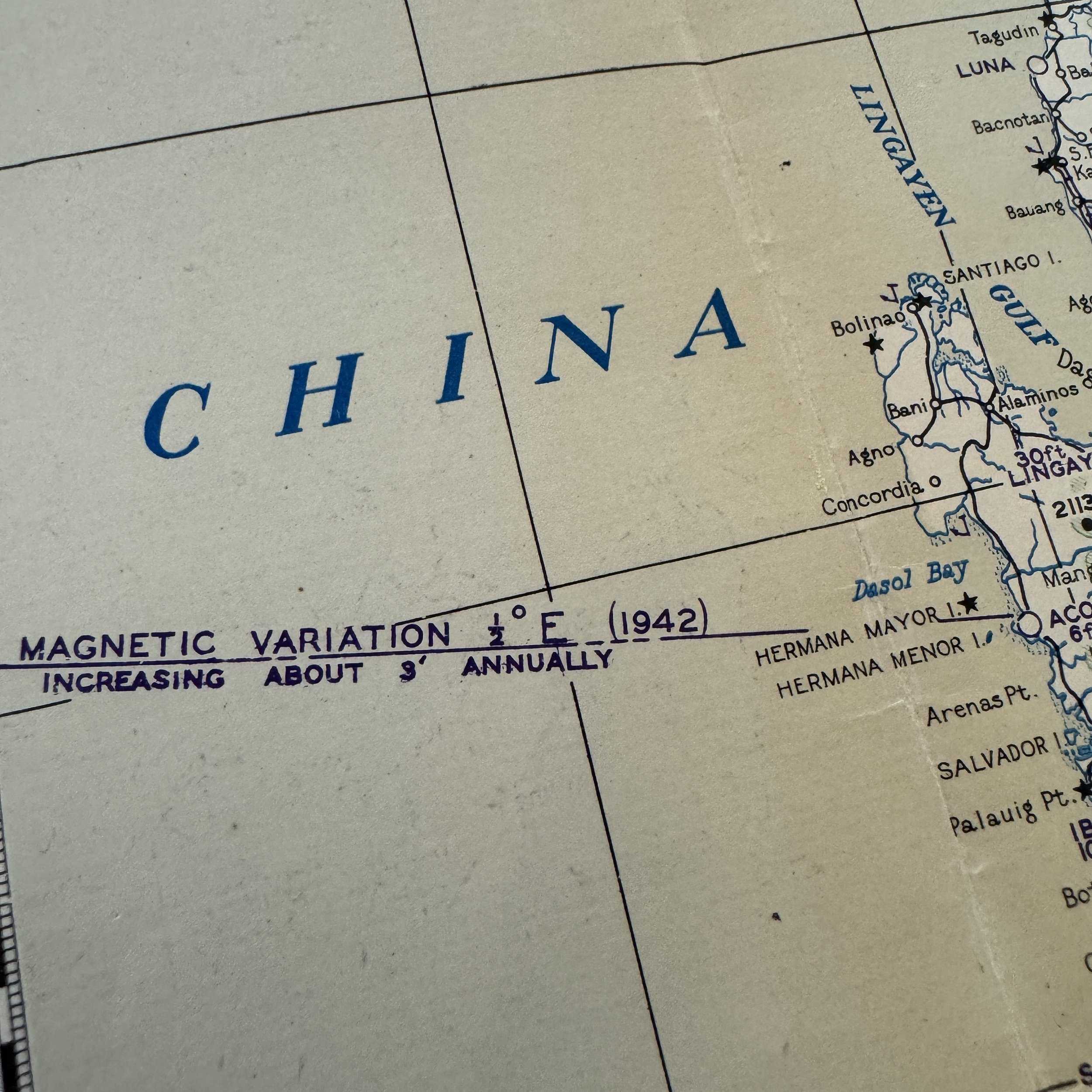
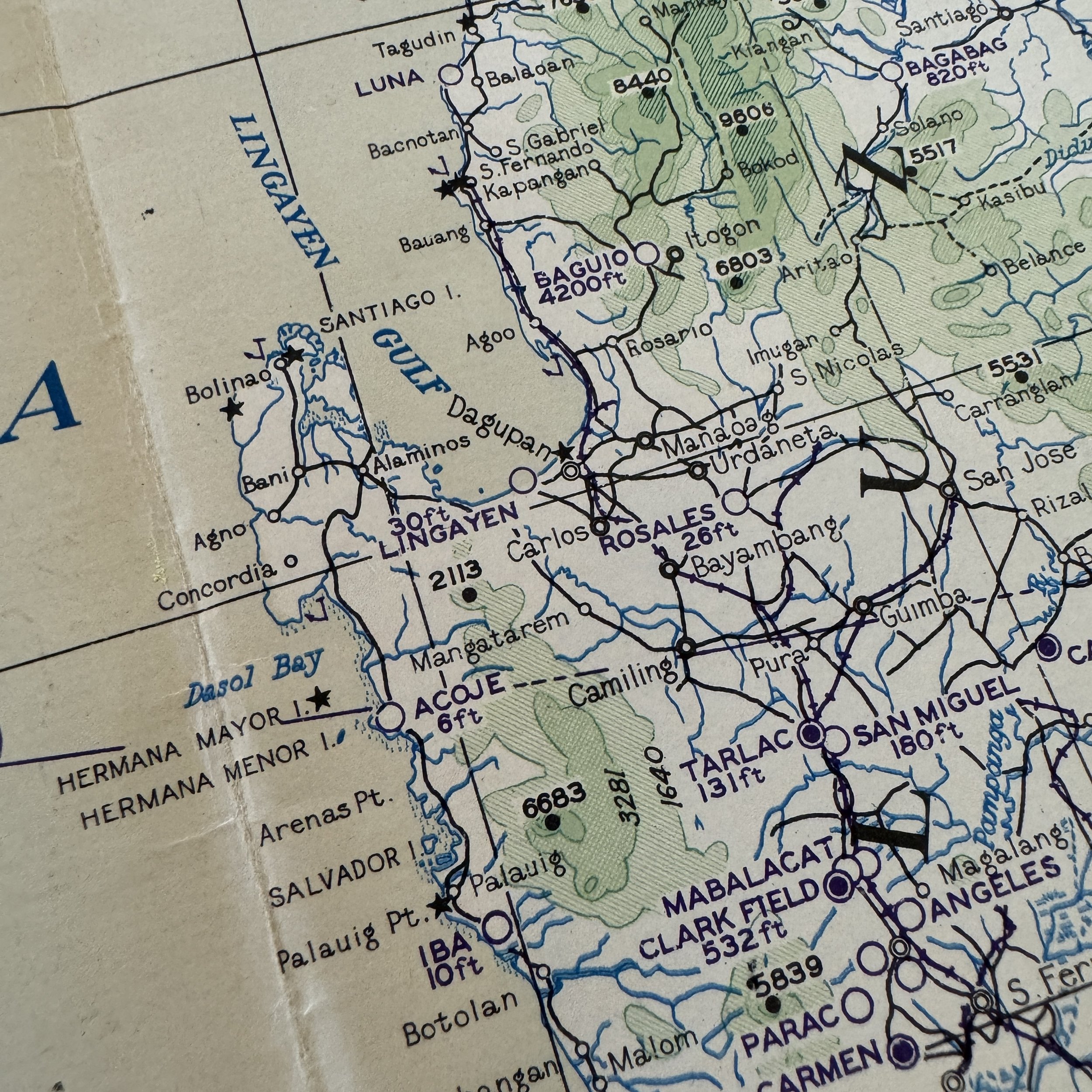
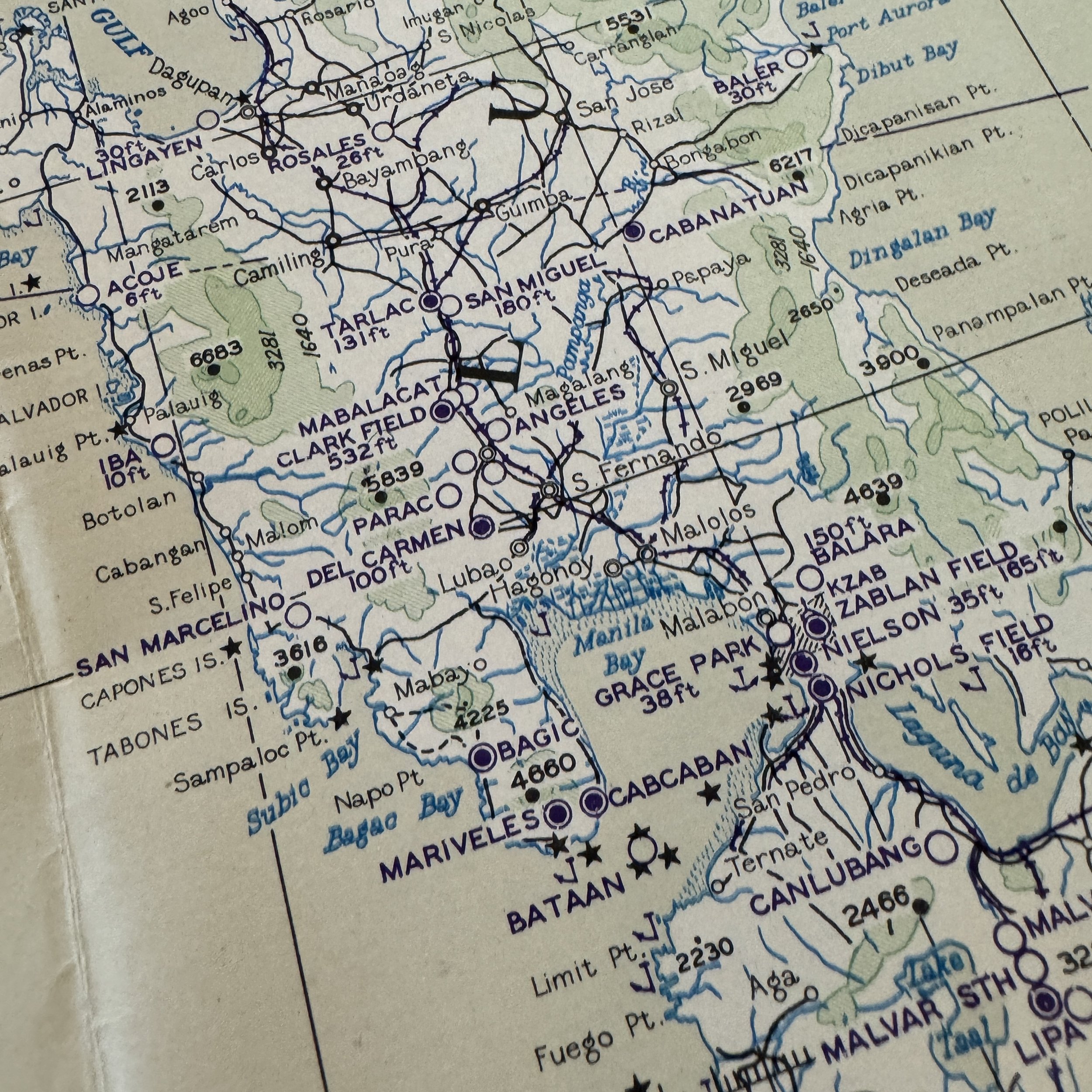
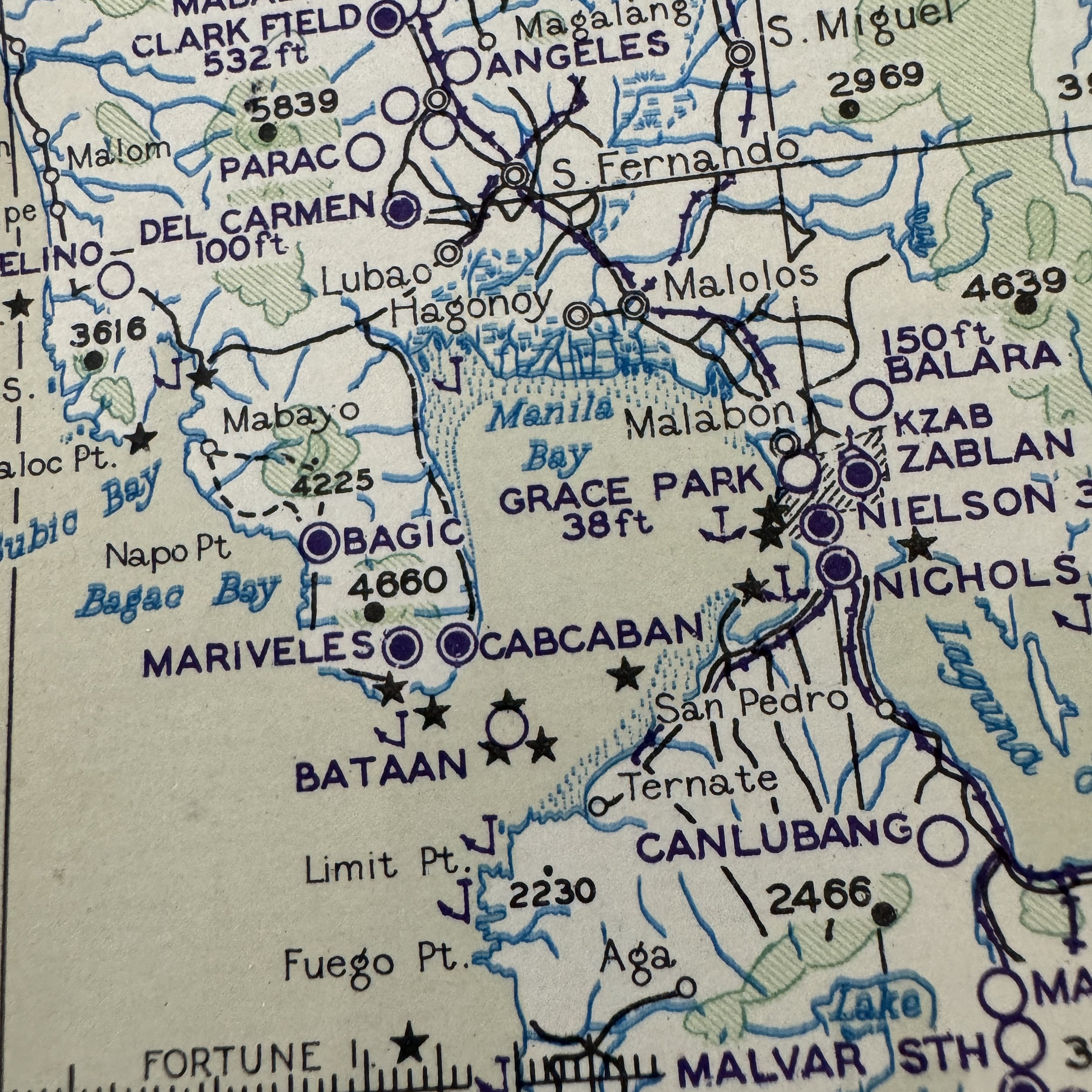
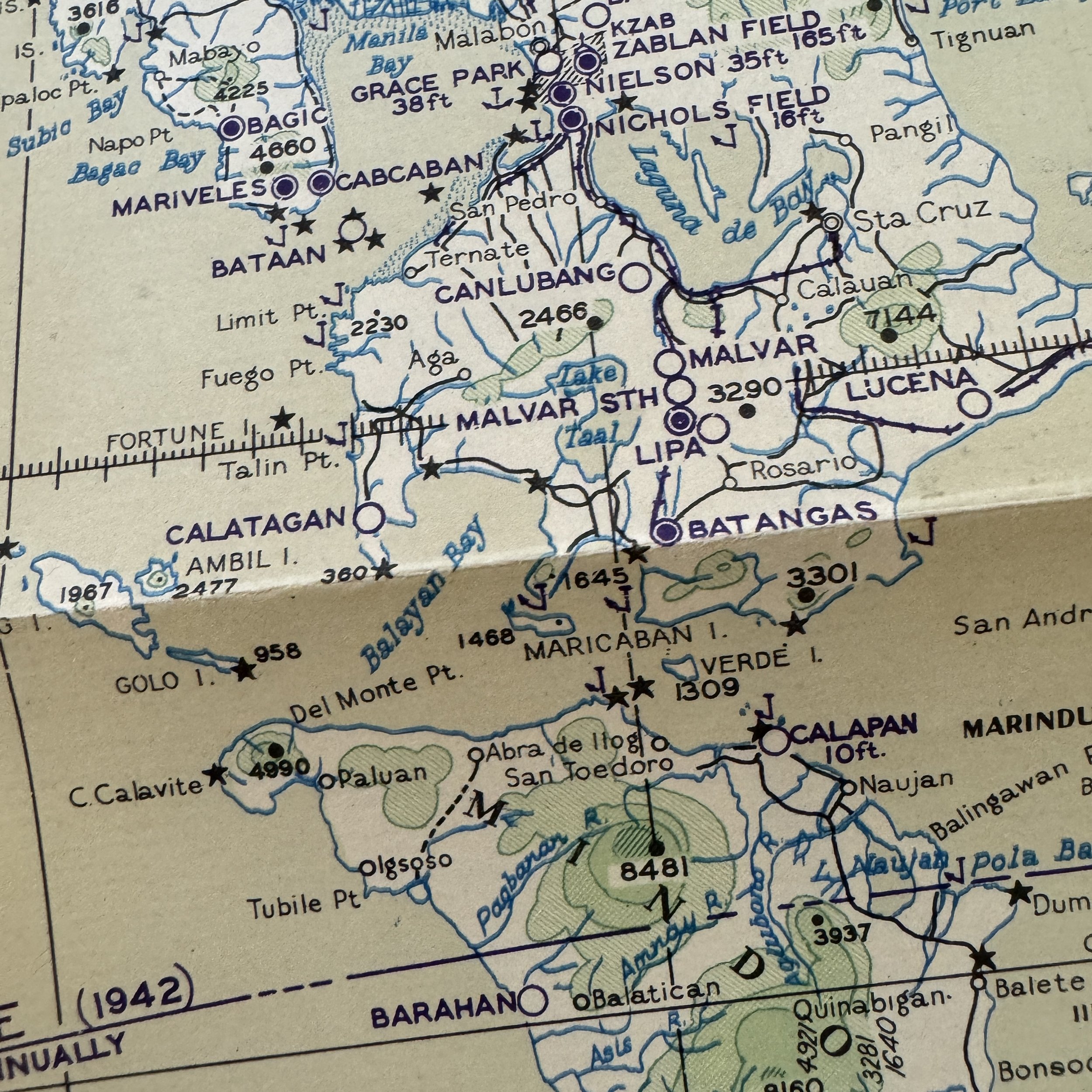
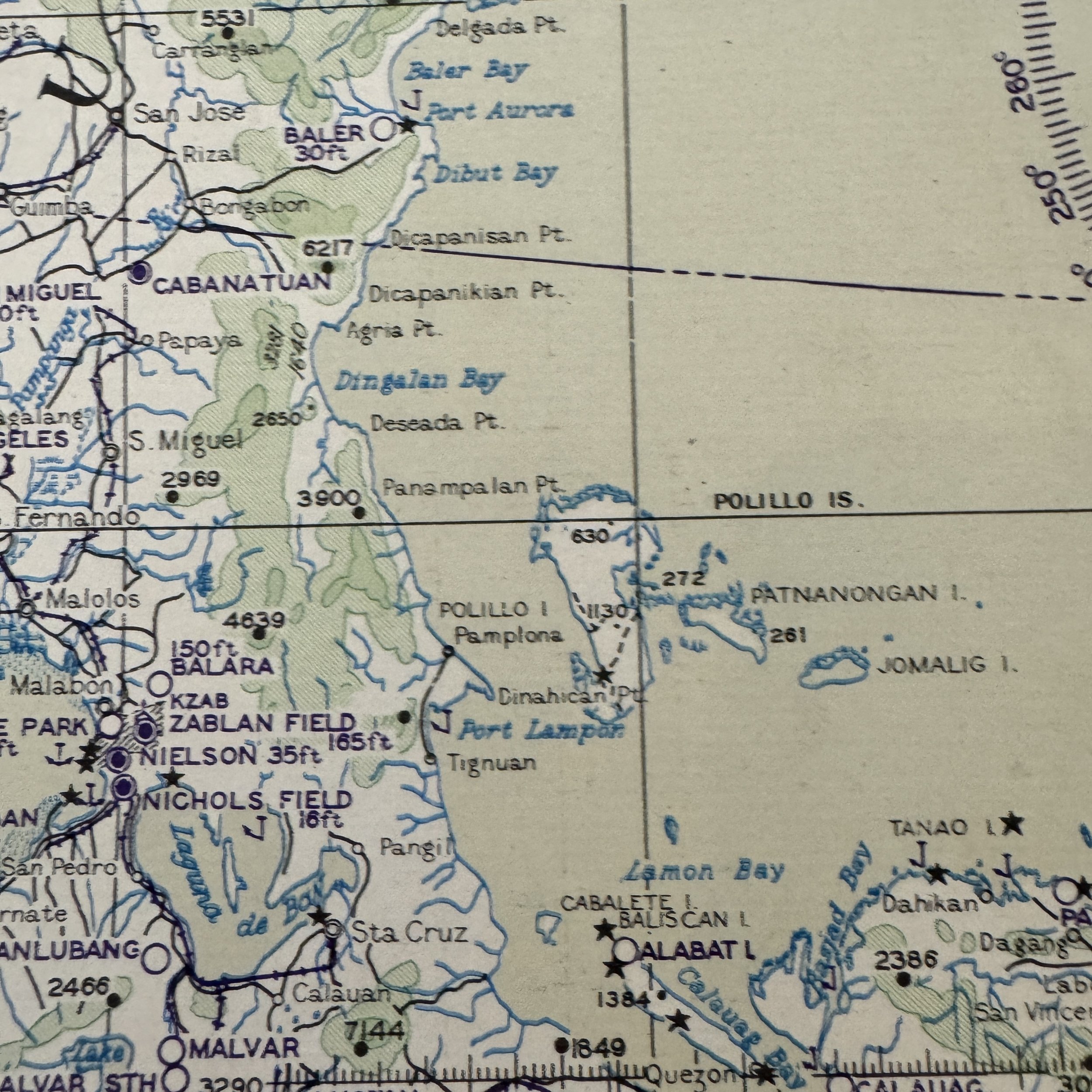
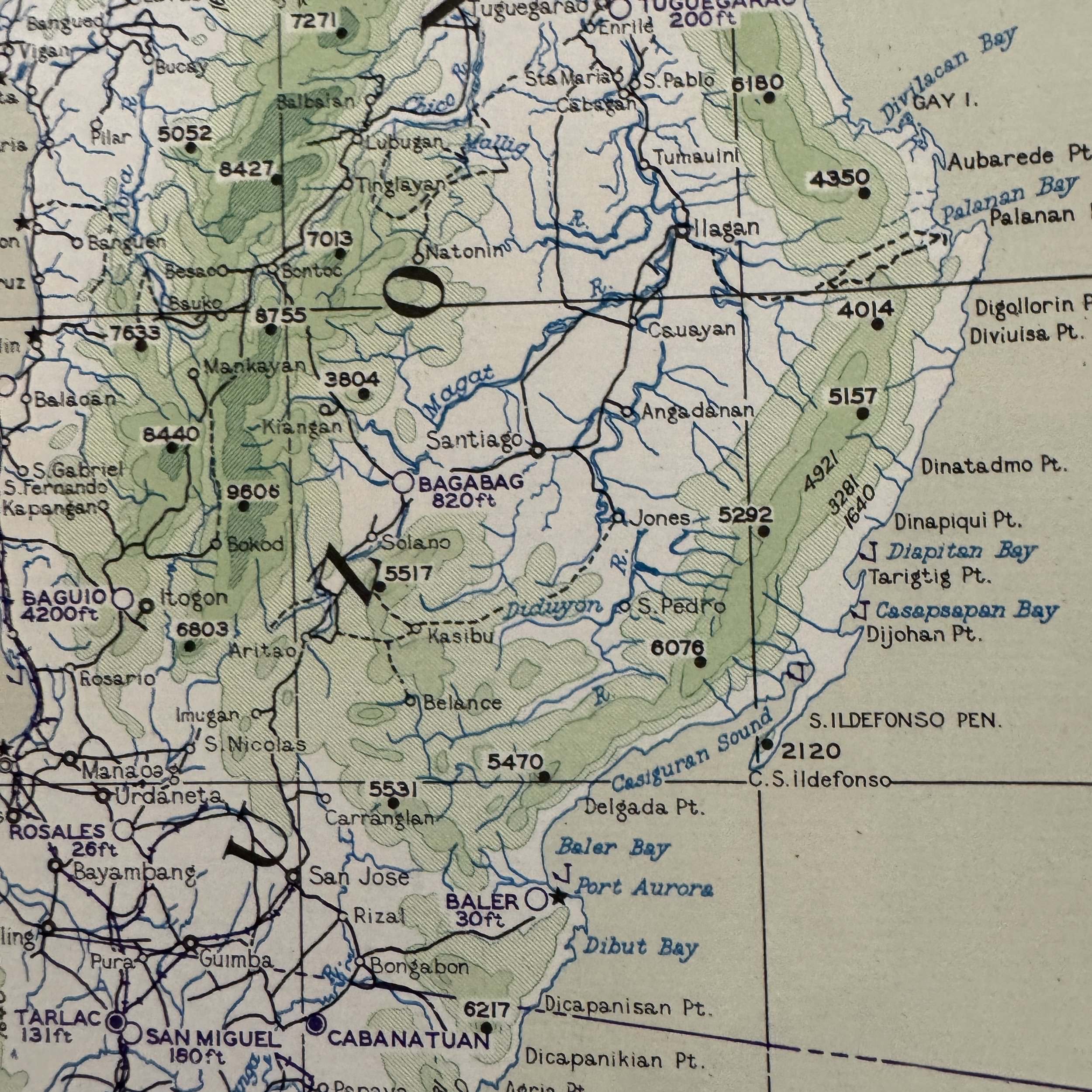
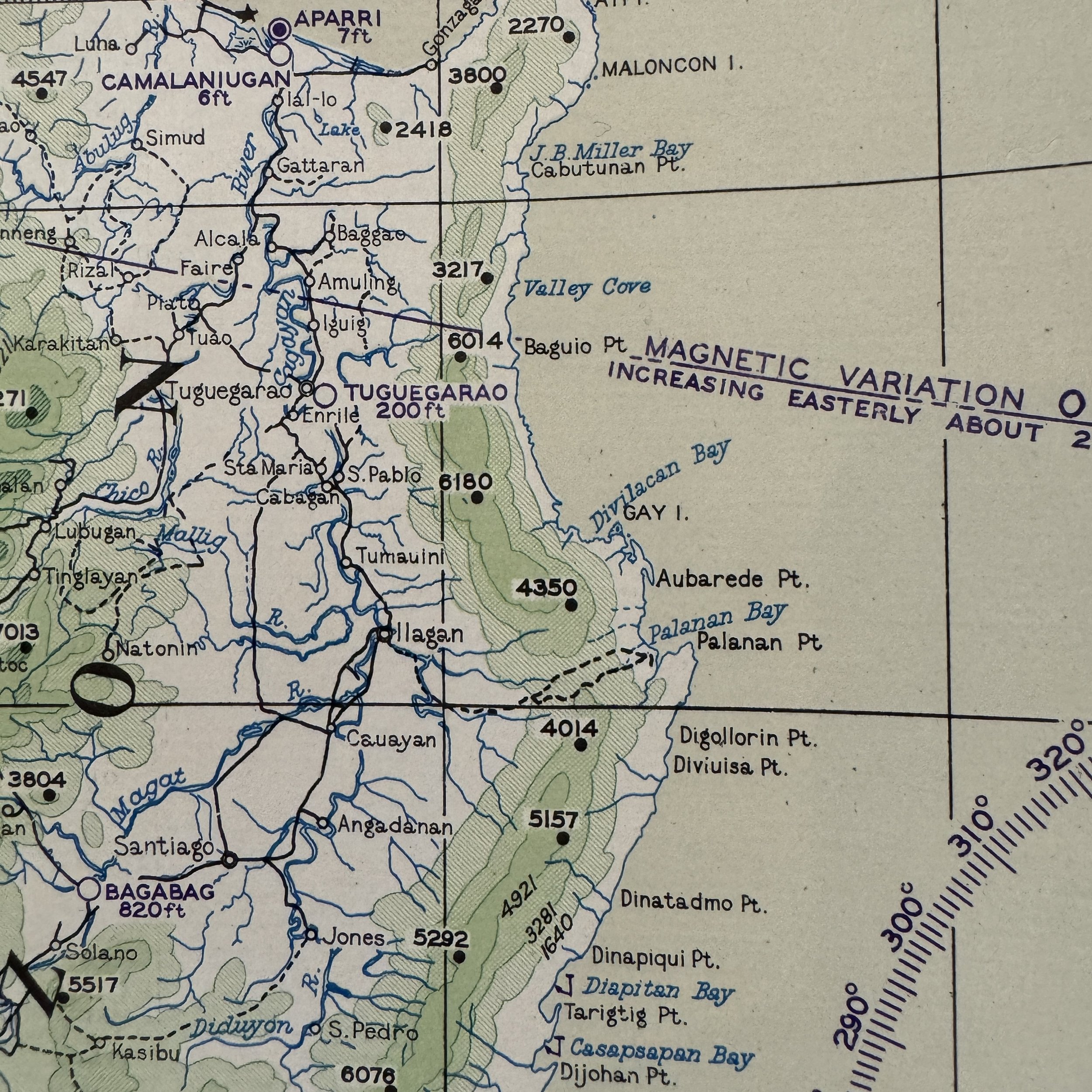
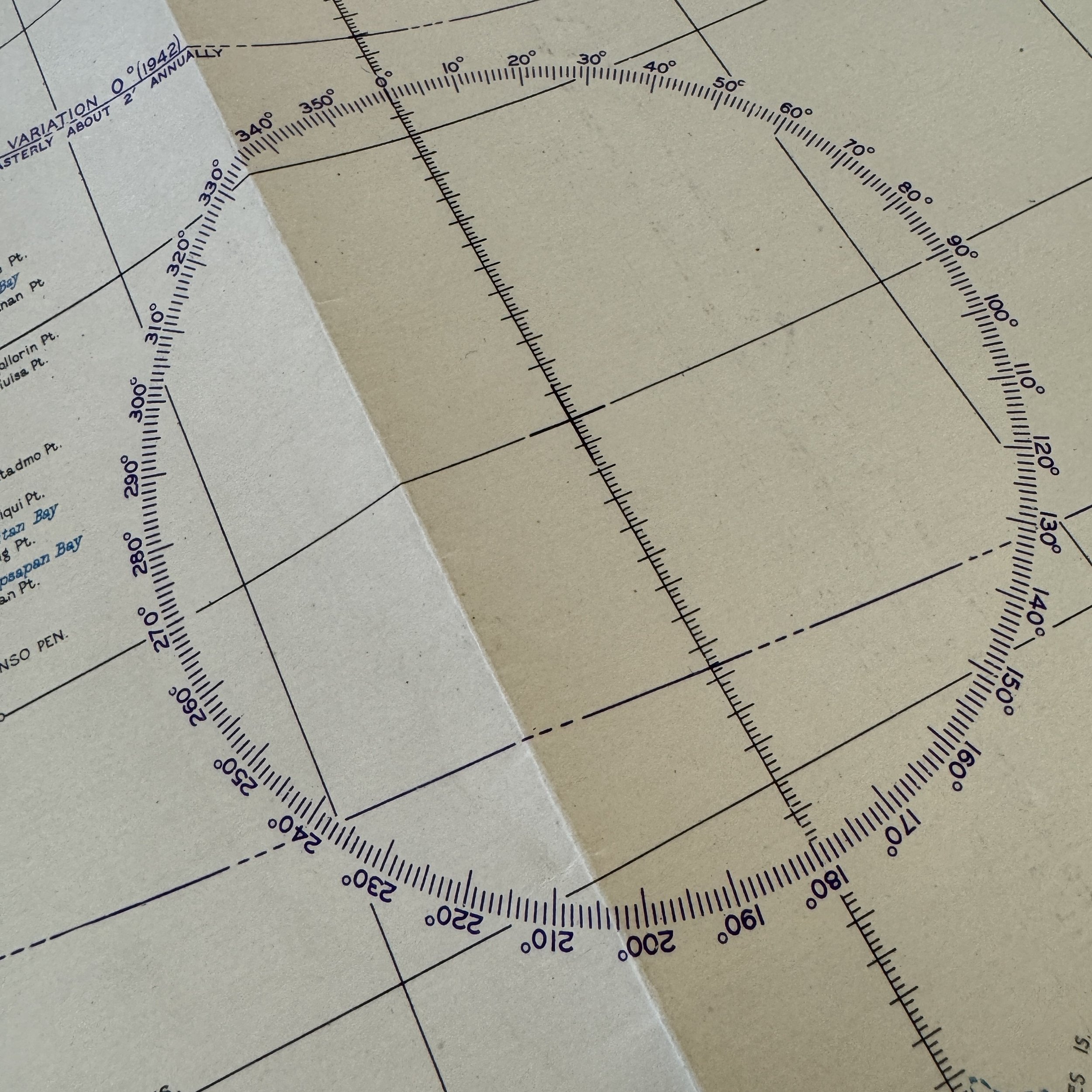
EXTREMELY RARE! WWII 1944 Battle of Leyte Gulf U.S. 5th Air Force Philippines Campaign Combat Flight Navigation Map (Specially Produced For U.S. 5th Air Force Missions)
Comes with hand-signed C.O.A. and a full historical write-up
*From the World War II Pacific Theater Bring-Back Collection of a U.S. Fifth Air Force Veteran.
Type: Original World War II U.S. Army Air Force Combat Flight Navigation Map Specially Prepared for the U.S. 5th Air Force by South West Pacific Area Command.
Campaign/Operations: Pacific Theater - Battle of Leyte Gulf - Philippines Campaign (1944–1945)
From 1944 to 1945, the U.S. Fifth Air Force played a crucial role in the Philippines Campaign, conducting extensive aerial operations over Luzon, Samar, Leyte Gulf, and Mindanao to weaken Japanese resistance and support Allied ground and naval forces. The campaign was launched as part of Operation King II with the invasion of Leyte in October 1944, where the Fifth Air Force carried out pre-invasion bombing raids against Japanese airfields and supply depots on Leyte and Samar, ensuring air superiority before MacArthur’s forces landed. Throughout the Battle of Leyte Gulf, the Fifth Air Force bombers and fighter squadrons engaged in interdiction missions against Japanese naval reinforcements, crippling enemy warships and transport convoys attempting to reach the battle zone. As the campaign progressed into Luzon in early 1945, the Fifth Air Force intensified its airstrikes on Clark Field, Manila, and Bataan, systematically destroying Japanese air power, infrastructure, and troop concentrations. P-38 Lightnings and P-51 Mustangs provided fighter escort for strategic bombing missions, while B-25 Mitchells executed low-level strafing and bombing runs against Japanese supply routes, artillery positions, and defensive fortifications. Meanwhile, in Mindanao, the Fifth Air Force provided critical close air support for Allied ground troops, targeting entrenched Japanese forces in Davao and Zamboanga while also conducting naval interdiction missions to prevent reinforcements from reaching the island. These sustained air operations, combined with coordinated amphibious and ground assaults, allowed the Allies to gradually dismantle Japan’s control over the Philippines. By mid-1945, the Fifth Air Force had successfully neutralized Japan’s ability to mount a counteroffensive, ensuring the success of MacArthur’s push toward Manila, the liberation of the Philippines, and setting the stage for the final offensive toward the Japanese home islands.
Date: August 1944 (Printed two months prior to the 5th Air Force’s role in the Battle of Leyte Gulf in October 1944)
Size: 21.5 × 30 inches
This exceptionally rare and museum-grade World War II Battle of Leyte Gulf - Philippines Campaign artifact is an original U.S. Army Air Force combat flight navigation map, dated August 1944, and is one of only a handful of known original examples still in existence. This map was specially prepared for the U.S. Fifth Air Force by the Ground Headquarters of the South West Pacific Area during the critical stages of the Pacific War, specifically for operations over Luzon, Samar, Leyte Gulf, and Mindanao.
This combat mission flight map played a vital role in guiding strategic bombing missions, air superiority campaigns, and ground support operations against heavily fortified Japanese positions. Throughout 1944 and 1945, the Fifth Air Force spearheaded the Allied air offensive over the Philippines, launching precision airstrikes, supporting amphibious landings, and crippling Japanese supply lines. The combat history embedded in this map reflects the ferocity of the air battles fought in the Philippines, where every successful mission contributed to the defeat of Japan’s military dominance in the region.
What makes this map an extremely rare World War II artifact is its status as one of the few surviving Pacific Theater combat maps that were specifically prepared for the Fifth Air Force under the direction of the Chief Engineer of Ground Headquarters within the South West Pacific Area Command. These maps were meticulously developed using aerial reconnaissance data and topographical intelligence, ensuring that pilots and mission planners had the most accurate and up-to-date information when conducting high-risk bombing raids, fighter patrols, and close air support missions. This combat flight navigation map was a result of close collaboration between the U.S. Fifth Air Force and the Royal Australian Air Force, demonstrating the critical joint efforts between American and Australian forces in executing aerial operations against deeply entrenched Japanese positions in the Philippines.
The Fifth Air Force played an indispensable role in the major battles of the Philippines Campaign from 1944 to 1945, including the Battle of Leyte Gulf, the Luzon Campaign, and air operations over Samar and Mindanao. As the campaign began with the Battle of Leyte Gulf in October 1944, the Fifth Air Force launched pre-invasion bombing raids targeting Japanese airfields and supply depots across Leyte and Samar, ensuring air superiority before MacArthur’s forces landed. Throughout the battle, Fifth Air Force bombers and fighters engaged in interdiction missions against Japanese naval reinforcements, crippling warships and transport convoys attempting to reach the Philippines. As the campaign expanded into Luzon in early 1945, the Fifth Air Force intensified its bombing runs against Clark Field, Manila, and Bataan, systematically dismantling enemy air power, infrastructure, and troop concentrations. P-38 Lightnings and P-51 Mustangs provided fighter escort for bombing missions, while B-25 Mitchells executed low-altitude strafing and bombing runs on enemy supply routes, artillery positions, and defensive bunkers.
Meanwhile, the Fifth Air Force was also conducting critical air operations over Mindanao, providing essential close air support for Allied ground forces during the liberation of Davao and Zamboanga. These airstrikes targeted entrenched Japanese positions and supply networks while conducting naval interdiction missions to prevent enemy reinforcements from reaching the island. By mid-1945, the sustained aerial campaign over Luzon, Samar, Leyte Gulf, and Mindanao had neutralized Japanese air and naval power in the region, securing the Philippines for the Allies and paving the way for the final push toward Okinawa and the Japanese home islands.
This map would have been used during these high-stakes missions, guiding pilots through hostile airspace where anti-aircraft fire, kamikaze attacks, and enemy interceptors posed constant threats. As the Fifth Air Force expanded its operations, maps like this became indispensable tools for mission planning, providing critical intelligence on enemy troop movements, coastal defenses, and strategic targets. With the Japanese military increasingly relying on desperate counteroffensives, the accuracy and reliability of these maps became even more crucial for the success and safety of Allied air operations.
As the war progressed into 1945, this map would have supported aerial operations in the Ryukyu Islands, Okinawa, and the final Allied push toward the Japanese mainland. Missions originating from captured airfields in Luzon and Mindanao were instrumental in preparing for an eventual invasion of Japan. The continued air dominance of the Fifth Air Force, facilitated by the intelligence provided by combat flight maps such as this one, played a decisive role in crippling Japan’s air force, severing supply lines, and ensuring the success of MacArthur’s island-hopping strategy.
This artifact stands as a testament to the ingenuity, precision, and strategic coordination that defined the U.S. Fifth Air Force’s aerial campaign in the Pacific War. With so few original combat navigation maps from this period surviving, this piece represents a once-in-a-lifetime historical relic, directly linked to the air war that led to the Allied victory in the Pacific and the eventual surrender of Japan.
Condensed 1944-1945 History of U.S. Fifth Air Force in the Pacific Theater:
The U.S. Fifth Air Force served as the aerial spearhead of General Douglas MacArthur’s island-hopping campaign from 1944 to 1945, playing a critical role in securing air superiority, conducting strategic bombing, and providing close air support for ground forces across the Pacific. As MacArthur’s forces advanced toward the Philippines and ultimately Japan, the Fifth Air Force was responsible for neutralizing key Japanese strongholds, disrupting enemy supply lines, and ensuring the success of amphibious landings. Throughout 1944, the Fifth Air Force was heavily engaged in the New Guinea Campaign, supporting operations in Hollandia (April 1944), Biak (May–June 1944), Noemfoor (July 1944), and Morotai (September 1944). These battles secured critical airfields, allowing the Allies to extend their operational reach further into the Pacific. The Admiralty Islands campaign (February–May 1944)was another key operation, during which the Fifth Air Force conducted extensive bombing raids and fighter sweeps to eliminate Japanese resistance on Los Negros and Manus Island. These islands provided the Allies with forward bases to launch further operations against the Philippines. By late 1944, the Fifth Air Force was instrumental in the Philippines Campaign, beginning with the Battle of Leyte Gulf (October 1944), where it conducted bombing raids on enemy airfields and provided air cover for naval and ground forces. As the campaign progressed into Luzon (January 1945), Mindoro, and Mindanao, Fifth Air Force aircraft engaged in relentless airstrikes against Japanese defensive positions, shipping convoys, and troop concentrations. Throughout these operations, the Fifth Air Force employed a variety of aircraft, including P-38 Lightnings, B-24 Liberators, B-25 Mitchells, and A-20 Havocs, to strike Japanese airfields, infrastructure, and reinforcements across islands such as Palawan, Cebu, Panay, and Borneo. As the war neared its end in mid-1945, the Fifth Air Force continued its air campaigns against Formosa (Taiwan) and the Ryukyu Islands, ensuring that Japan’s ability to counter the Allied advance was further diminished. By securing these islands, the Fifth Air Force played a decisive role in paving the way for the final stages of the Pacific War, culminating in the liberation of the Philippines and the eventual planning for an invasion of Japan.
19th Bombardment Group
22nd Bombardment Group
2d Combat Cargo Group
312th Bombardment Group
317th Troop Carrier Group
345th Bombardment Group
348th Fighter Group
35th Fighter Group
374th Troop Carrier Group
375th Troop Carrier Group
380th Bombardment Group
38th Bombardment Group
3rd Air Commando Group
3rd Bombardment Group
417th Bombardment Group
433rd Troop Carrier Group
43rd Bombardment Group
475th Fighter Group
49th Fighter Group
54th Troop Carrier Wing
58th Fighter Group
6th Reconnaissance Group
71st Reconnaissance Group
85th Fighter Wing
86th Fighter Wing
8th Fighter Group
90th Bombardment Group
91st Reconnaissance Wing
V Bomber Command
V Fighter Command